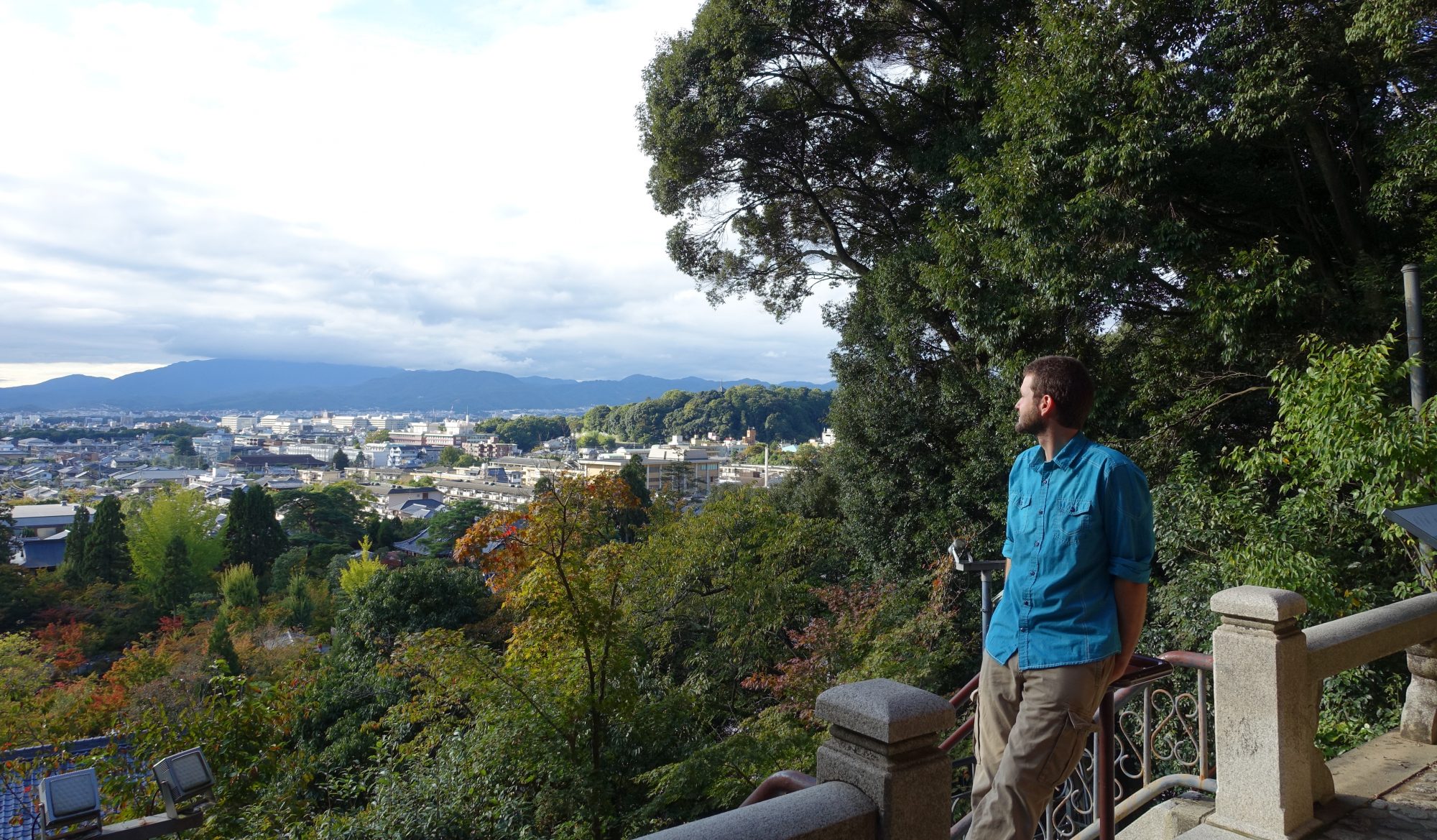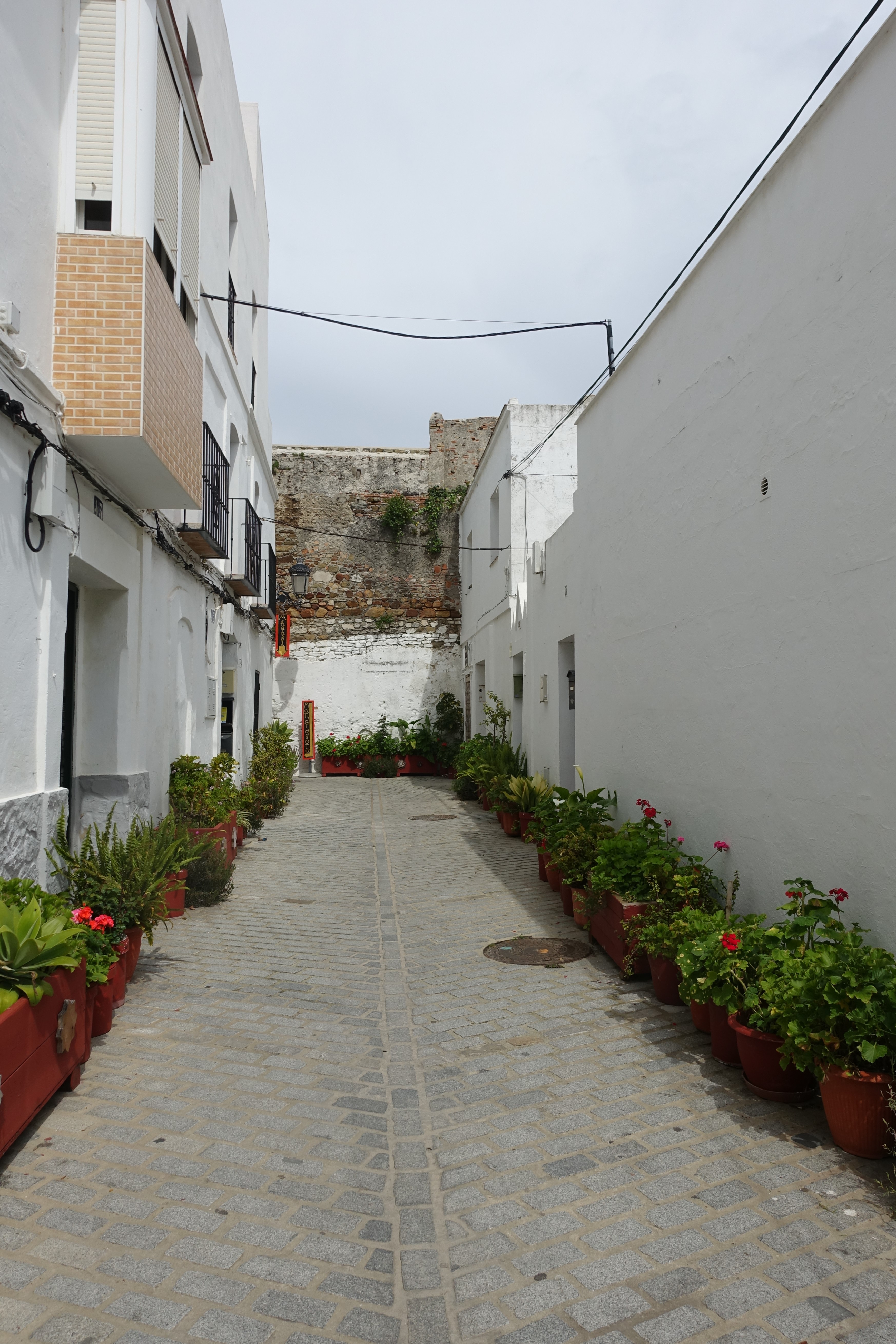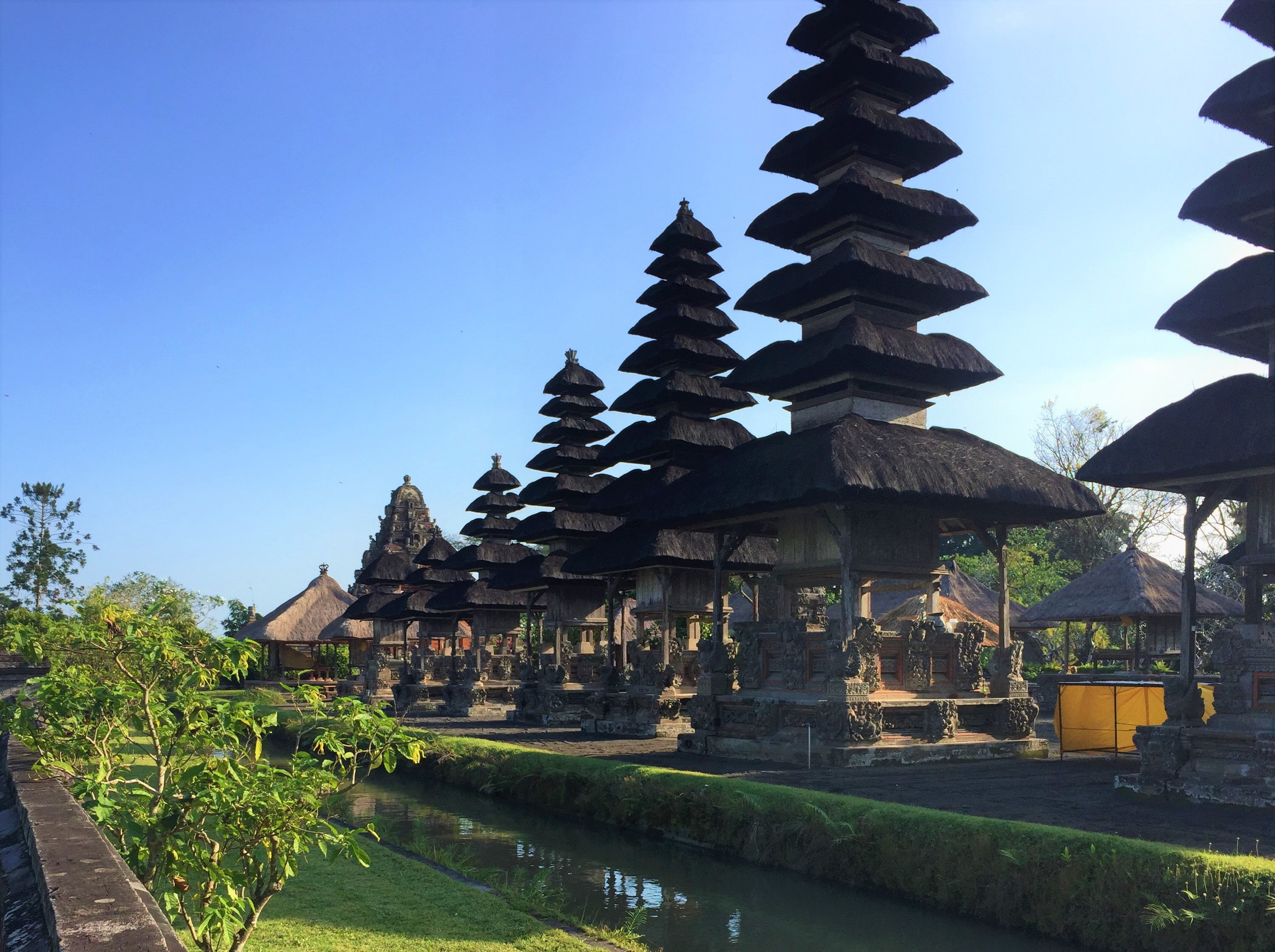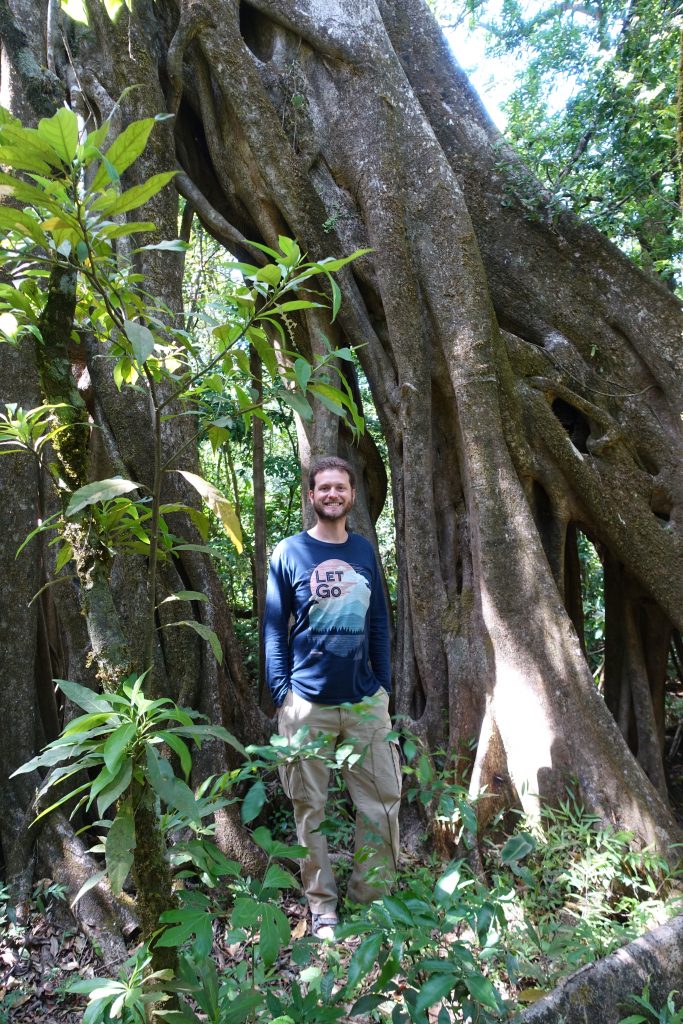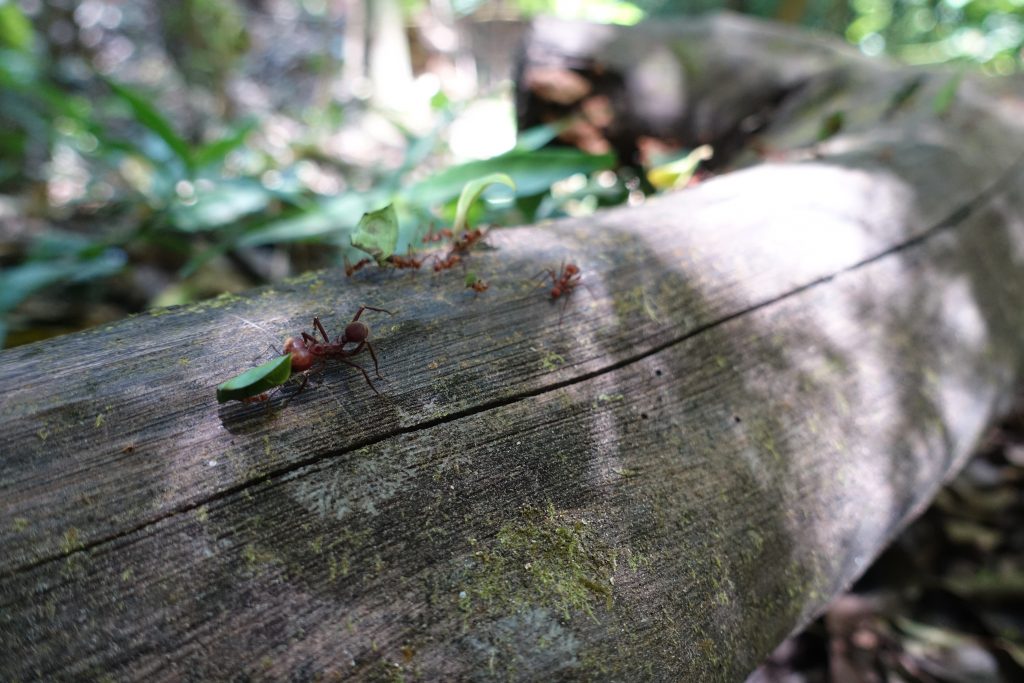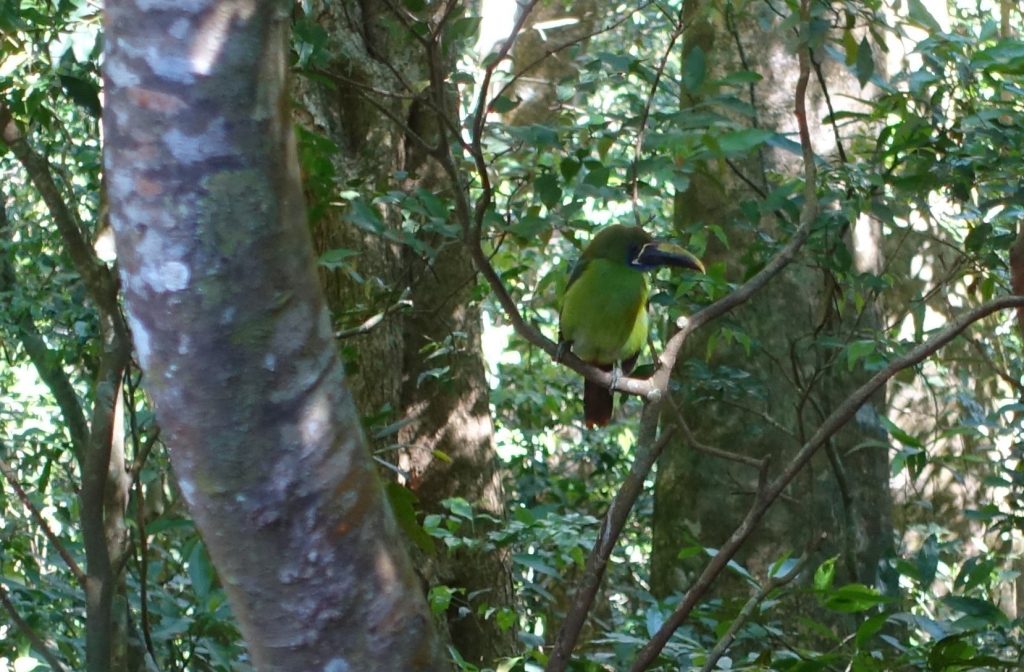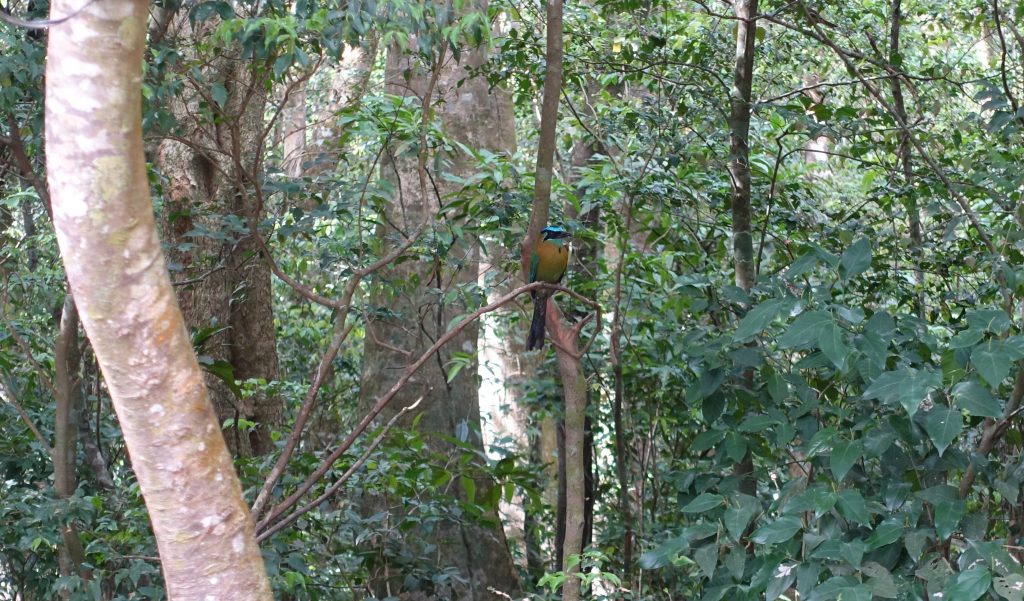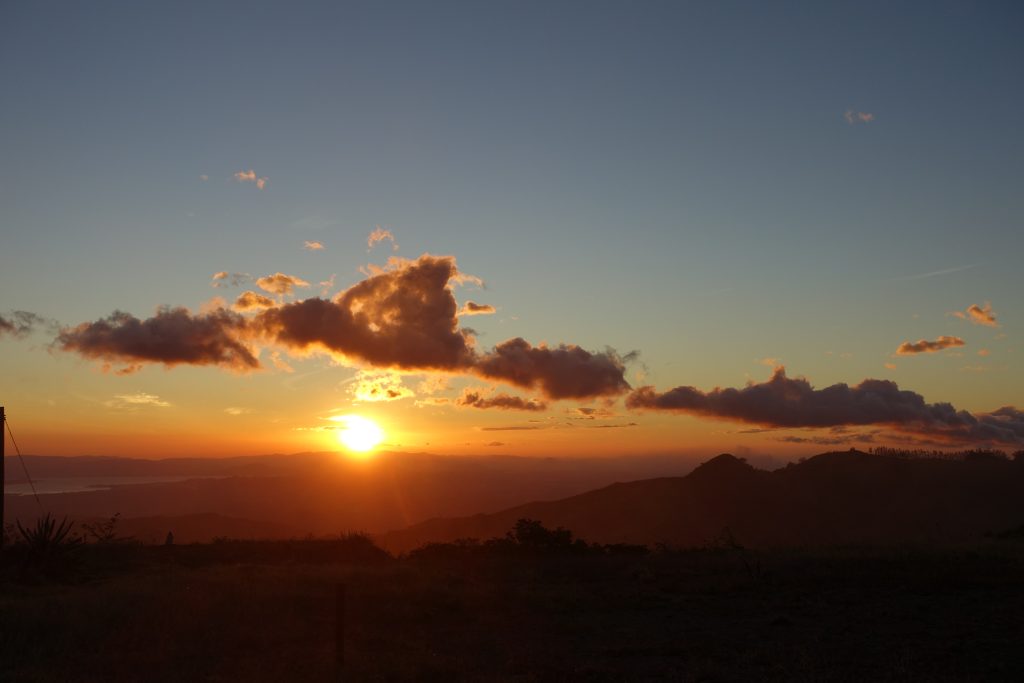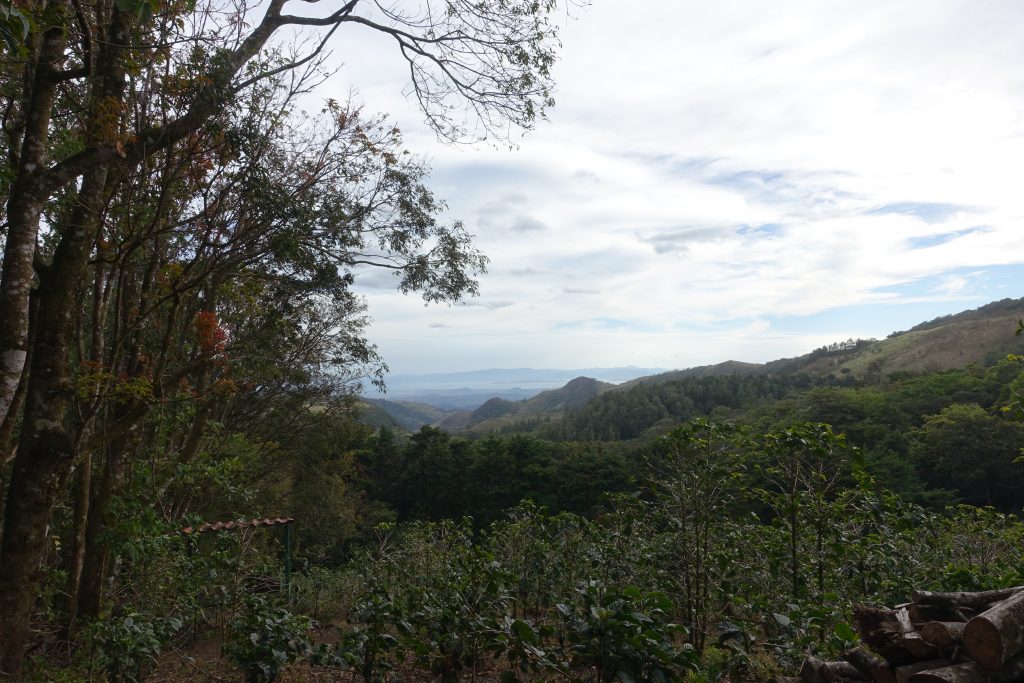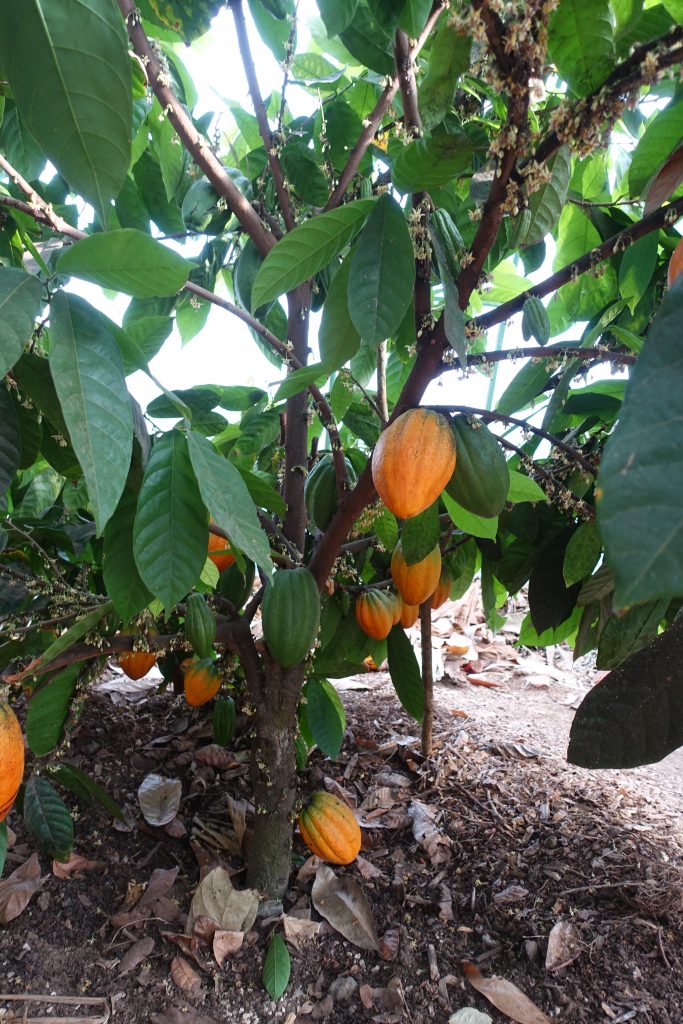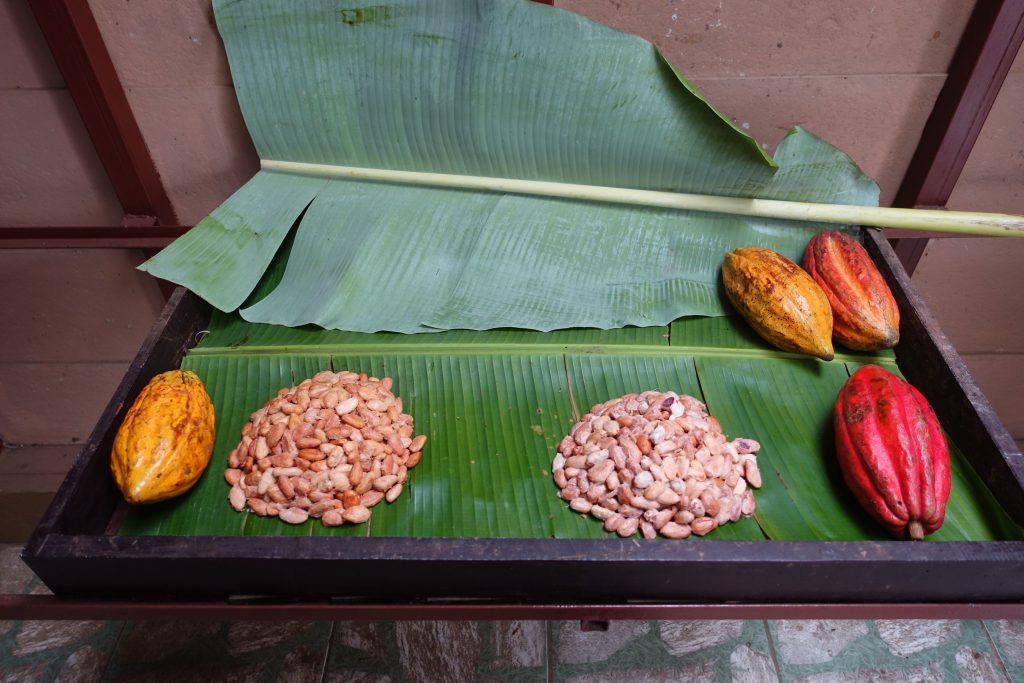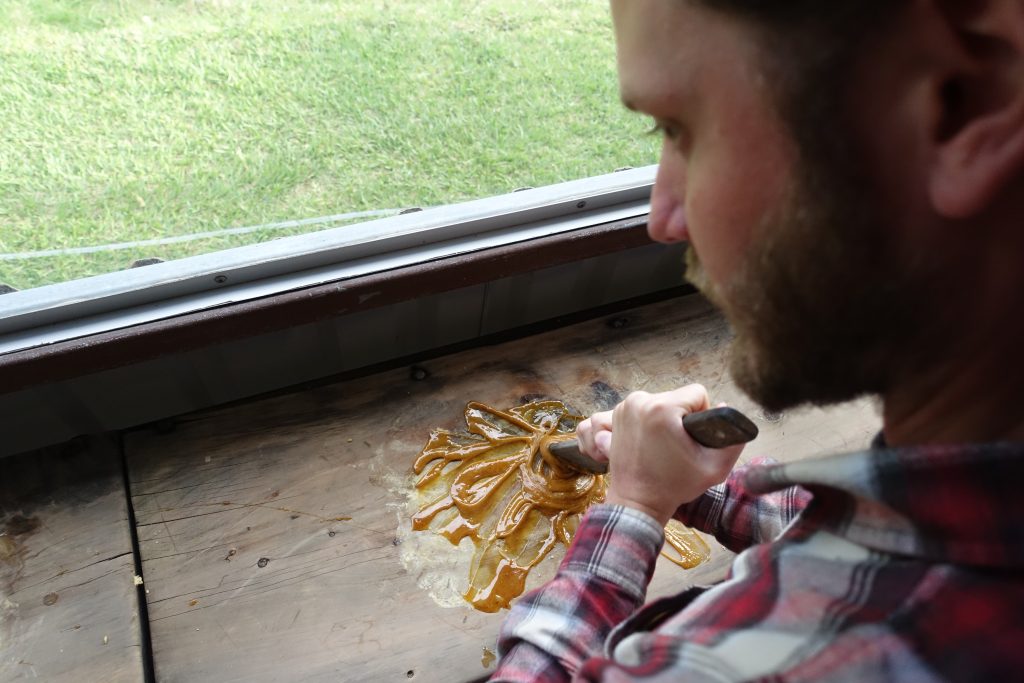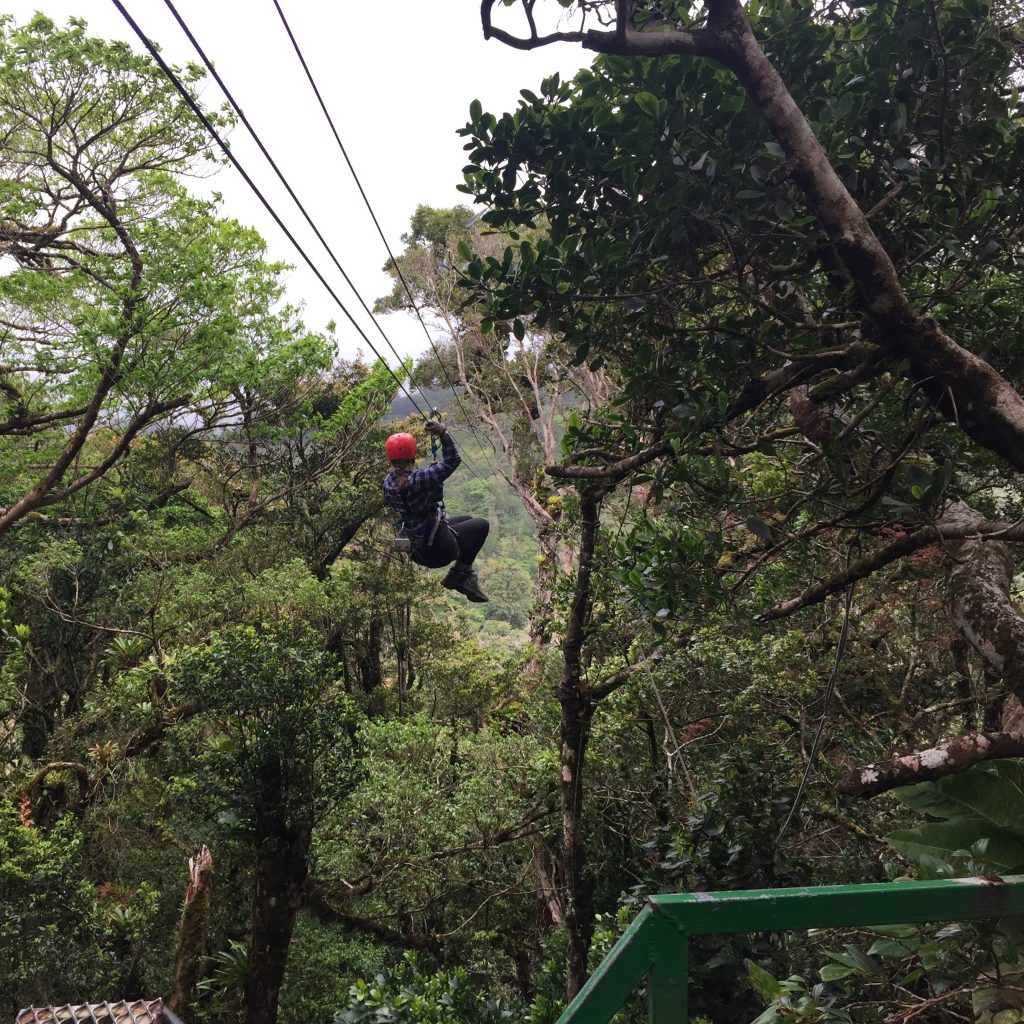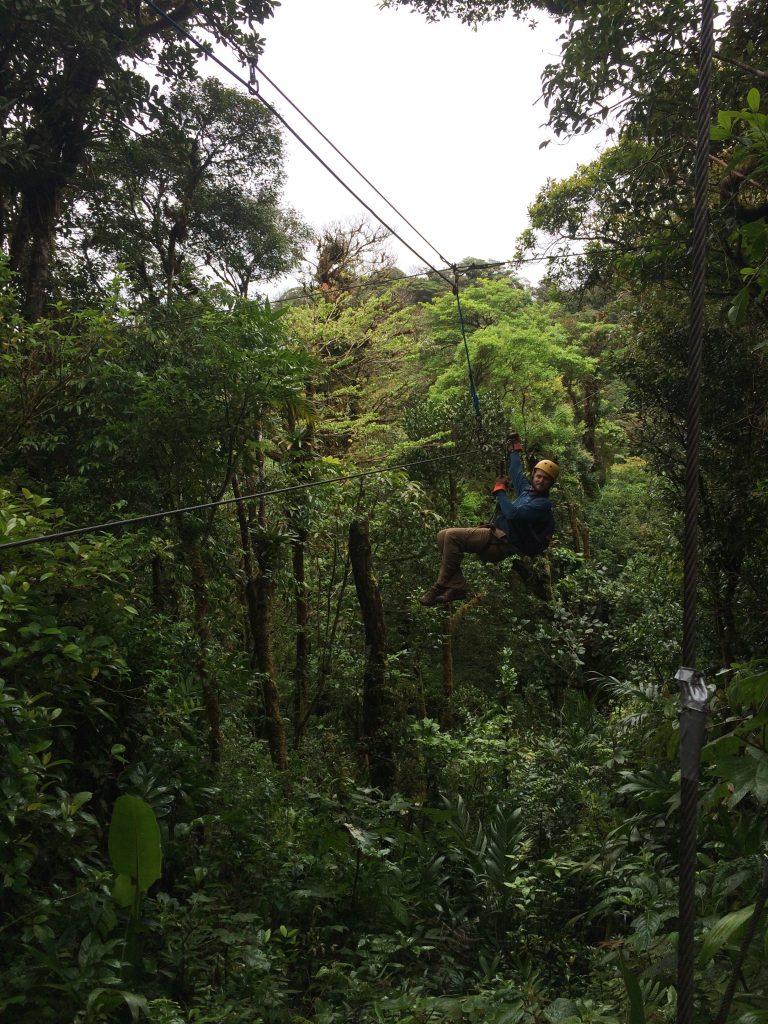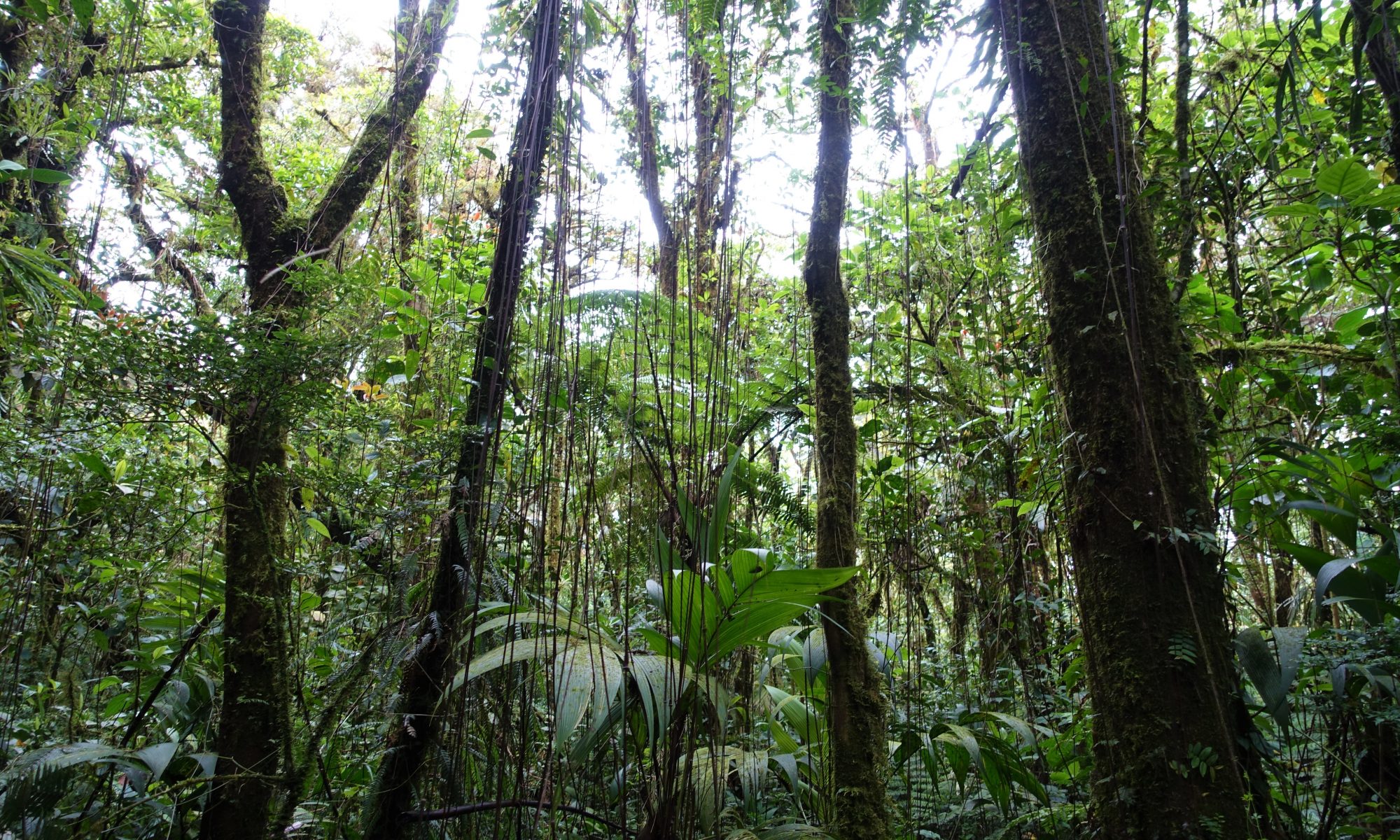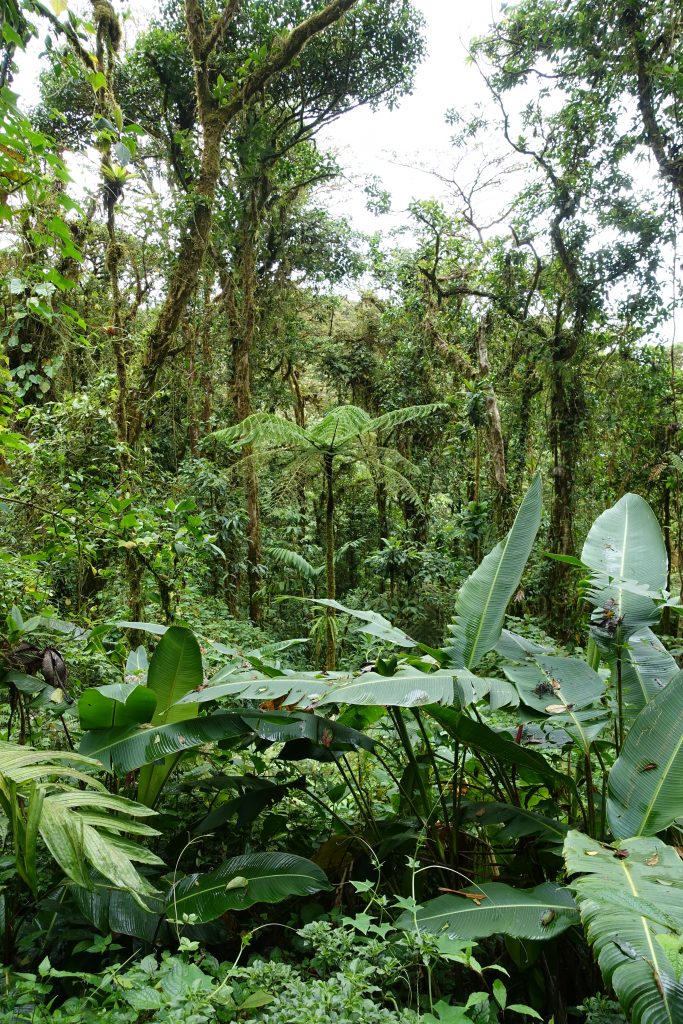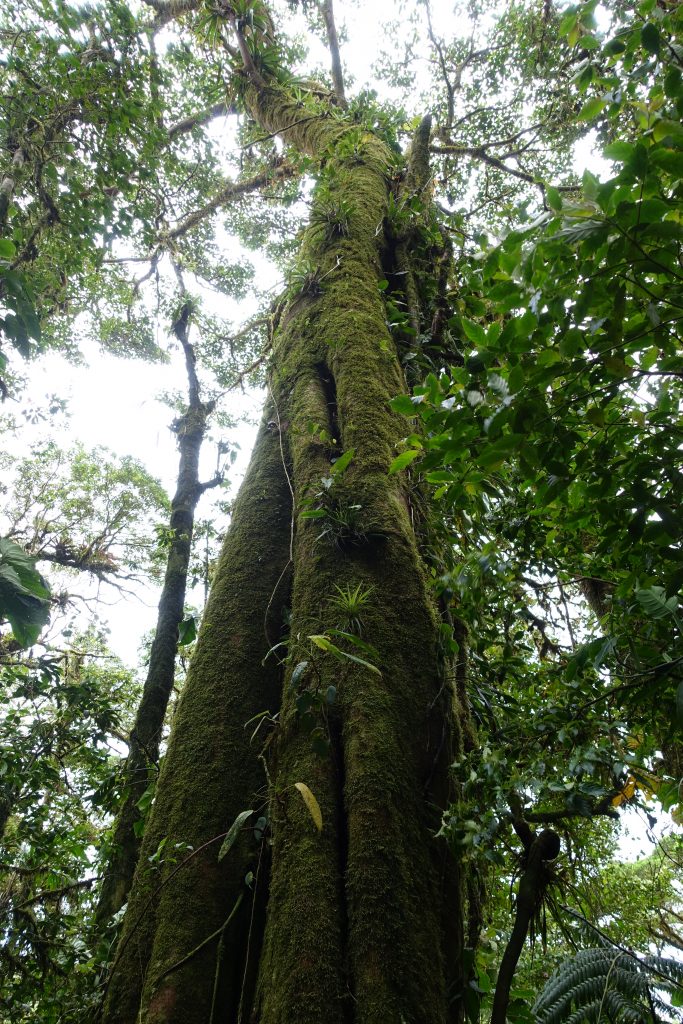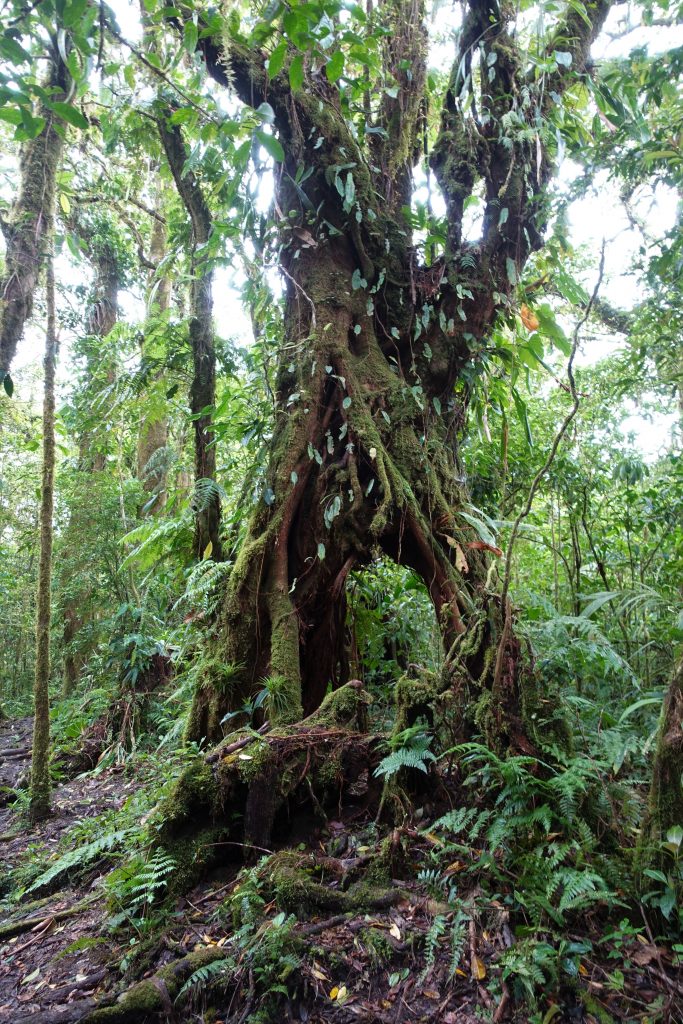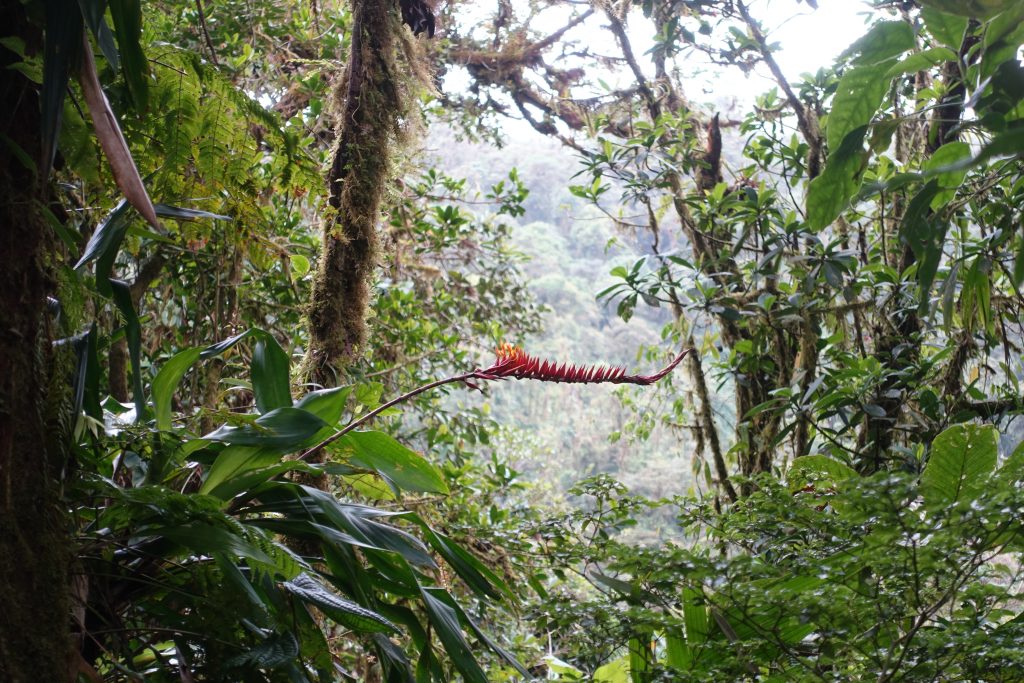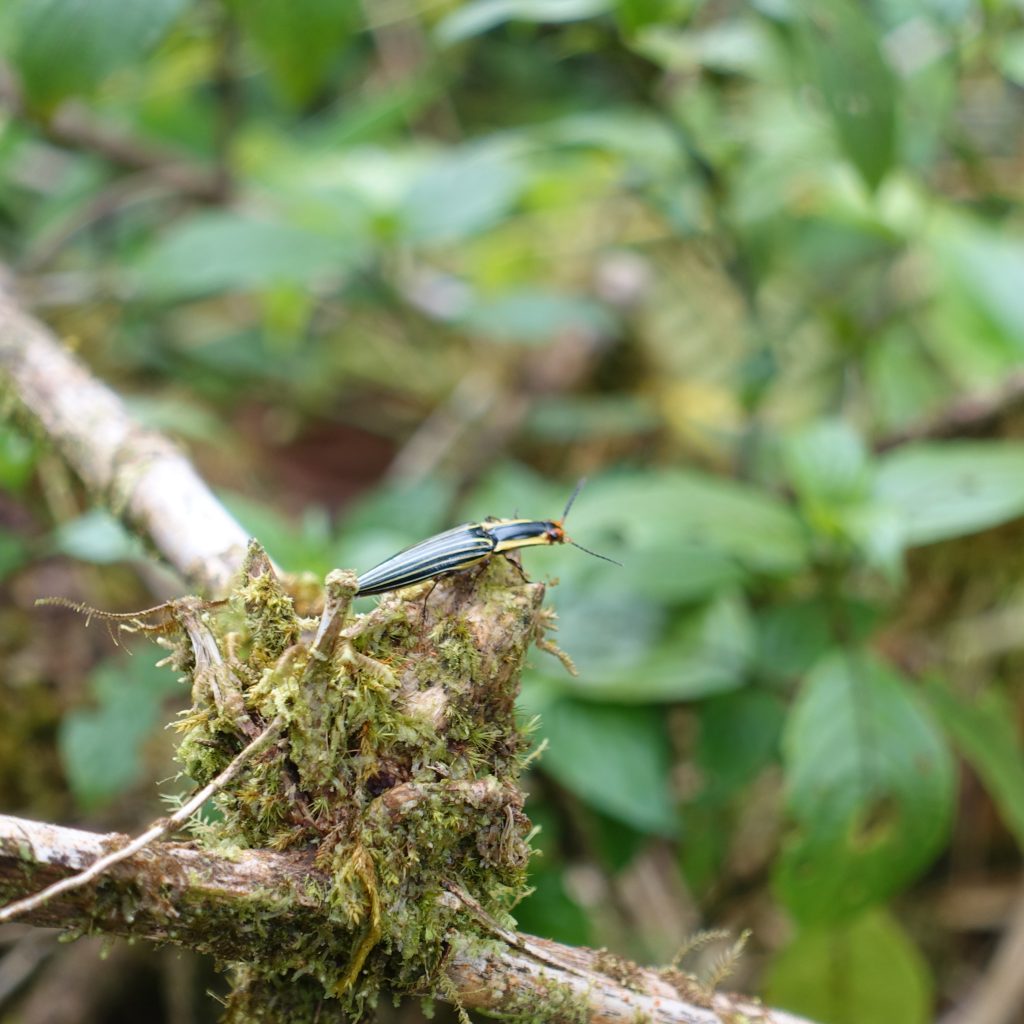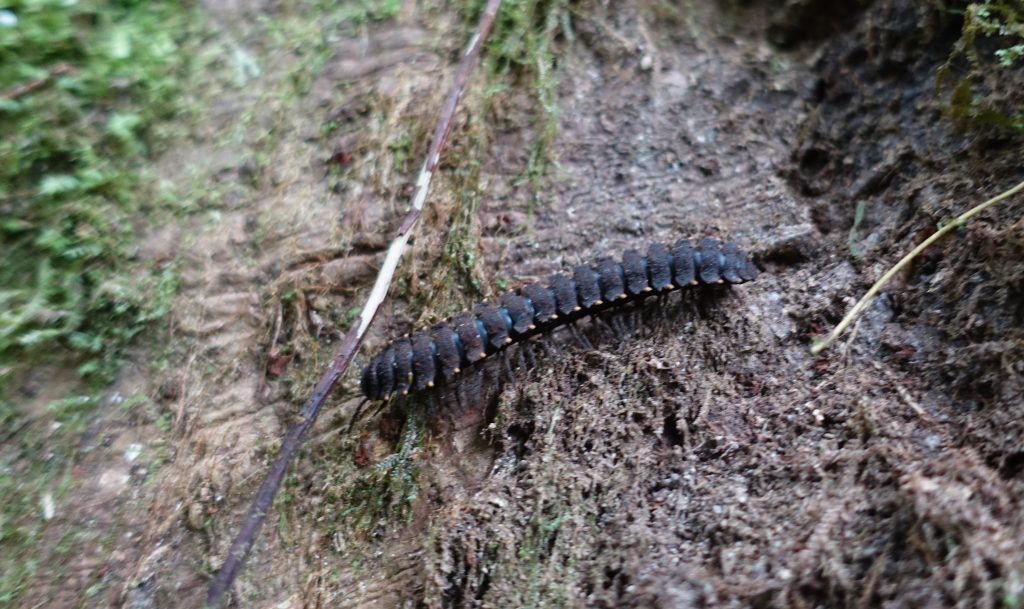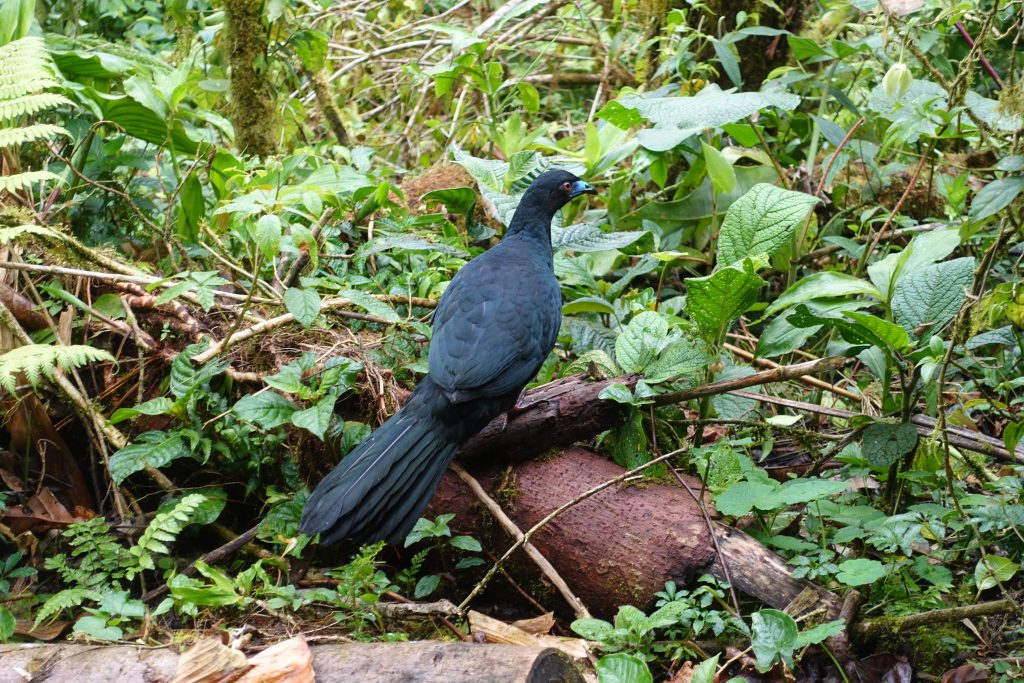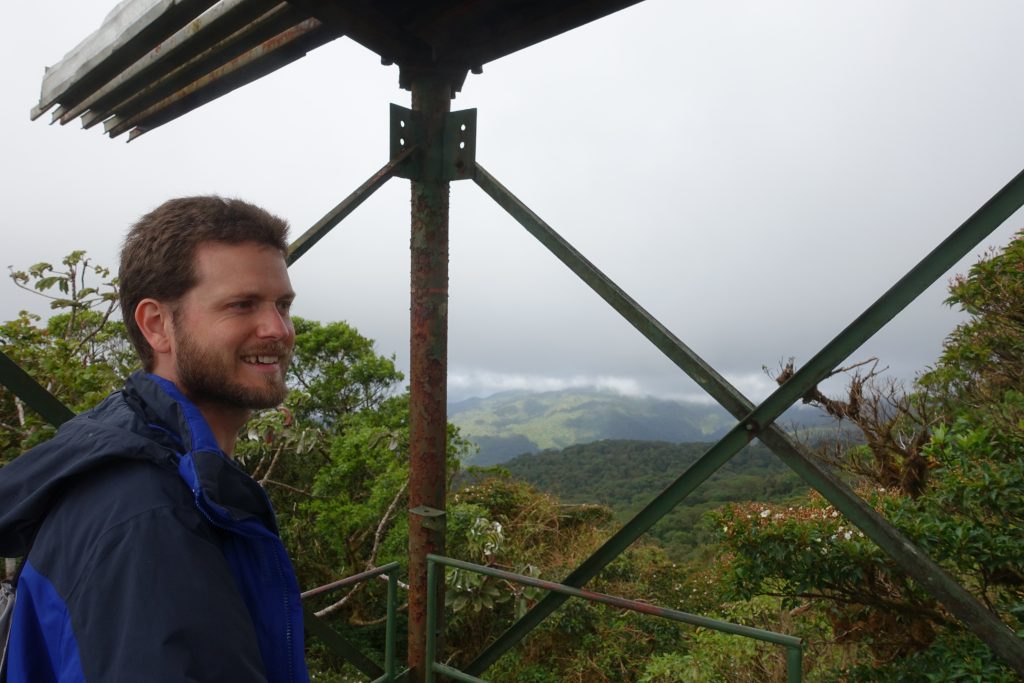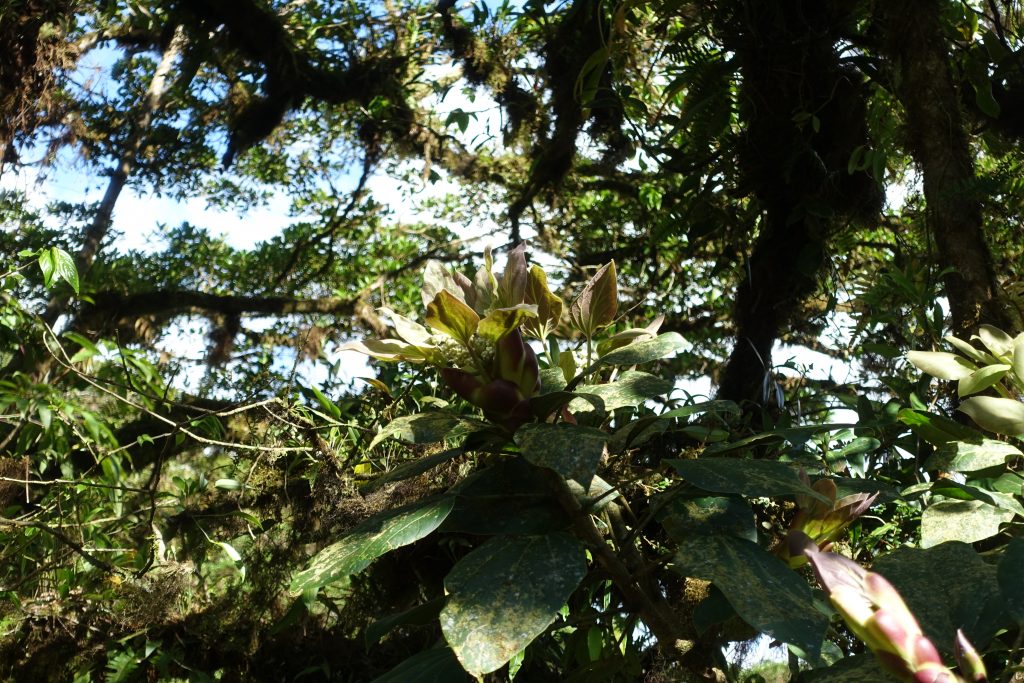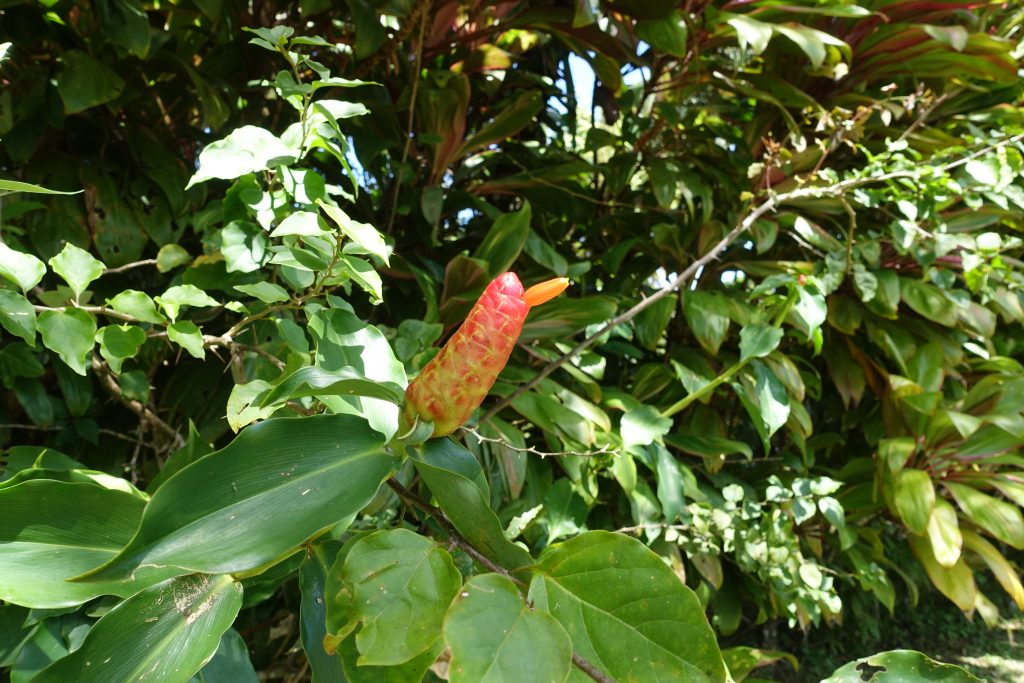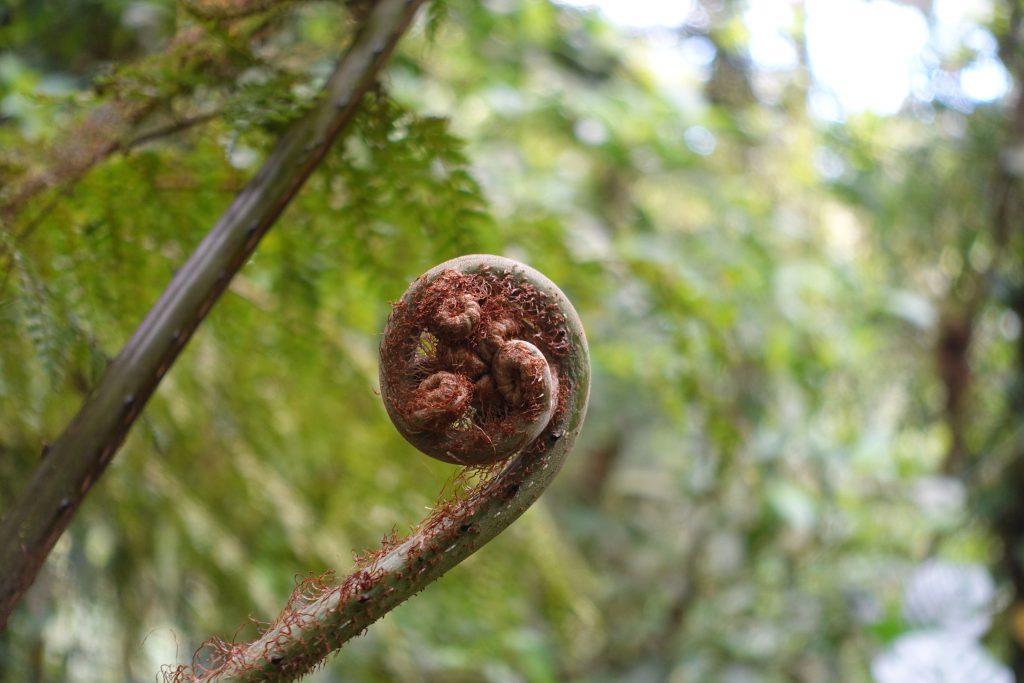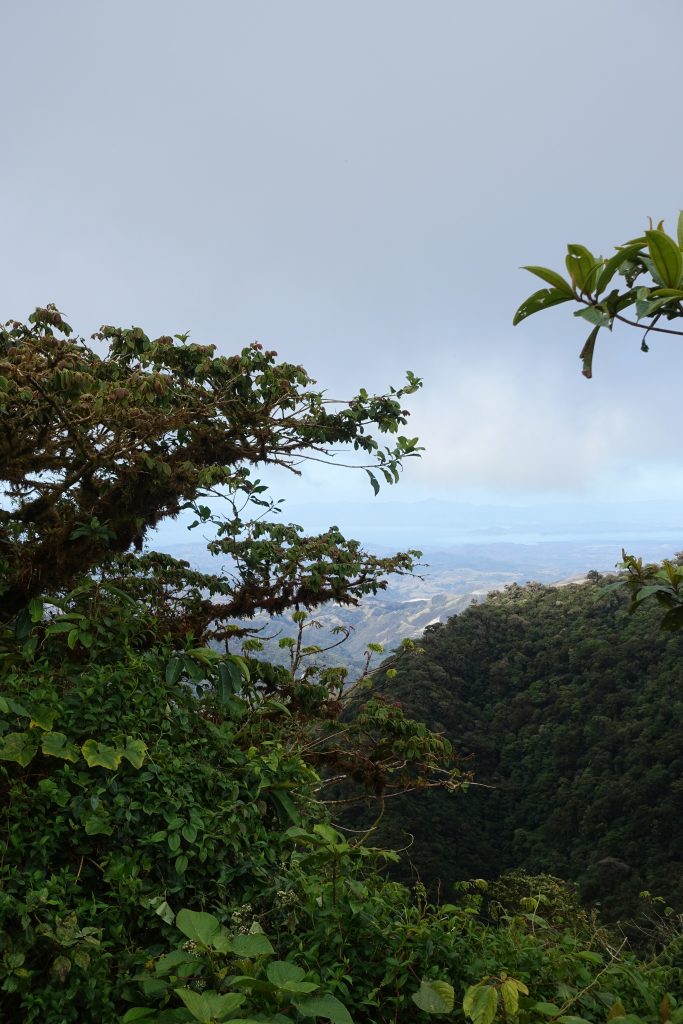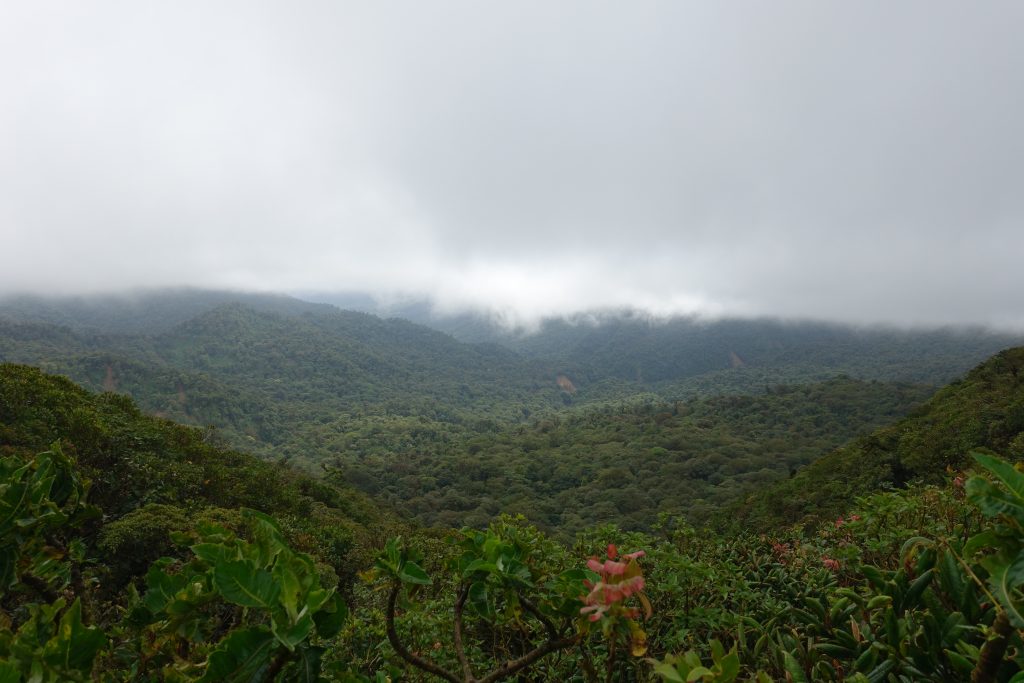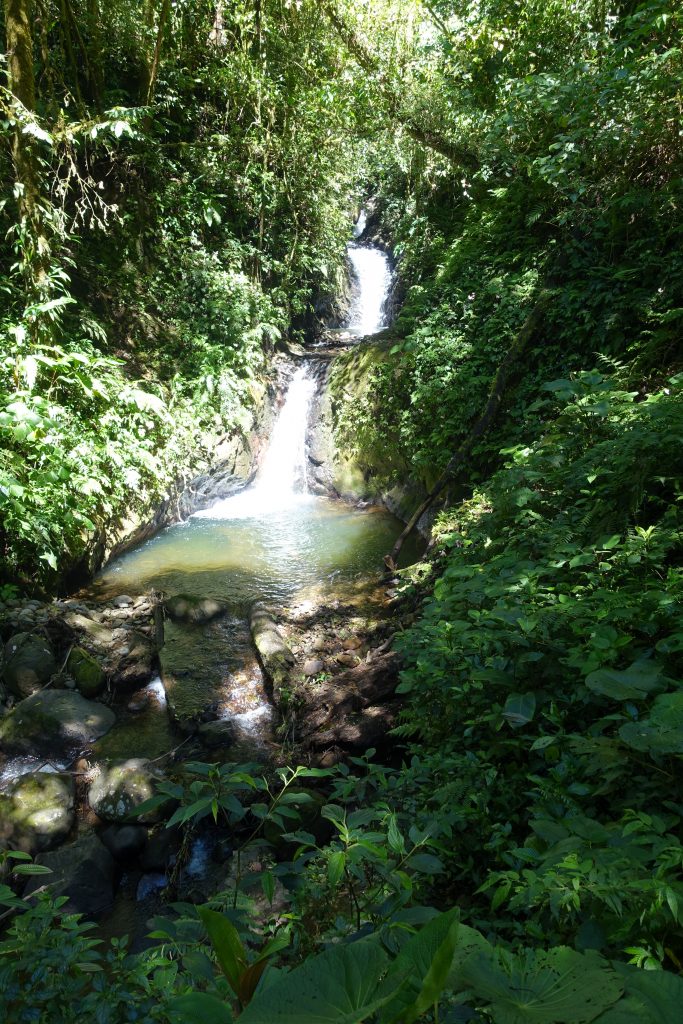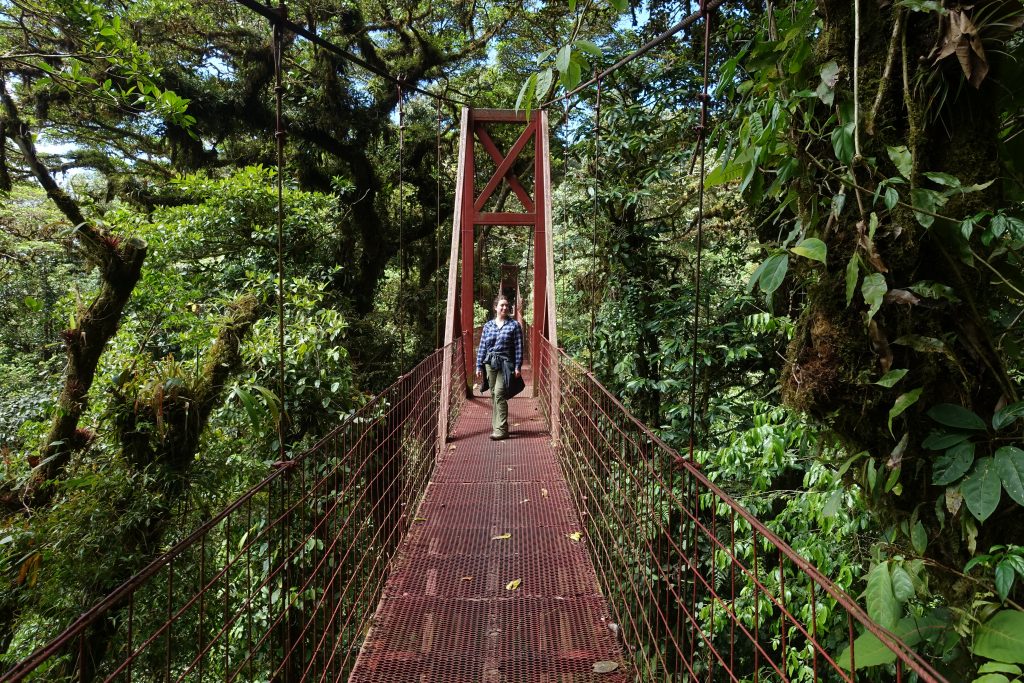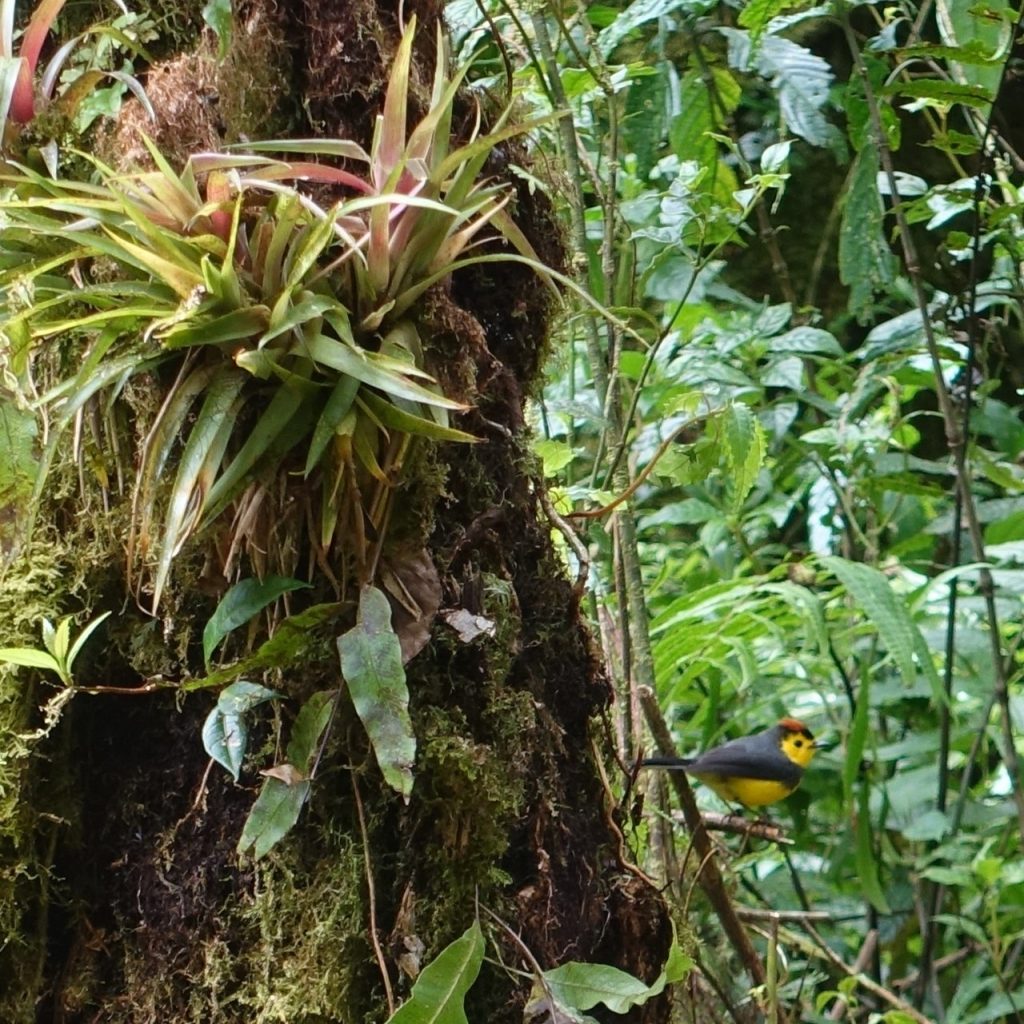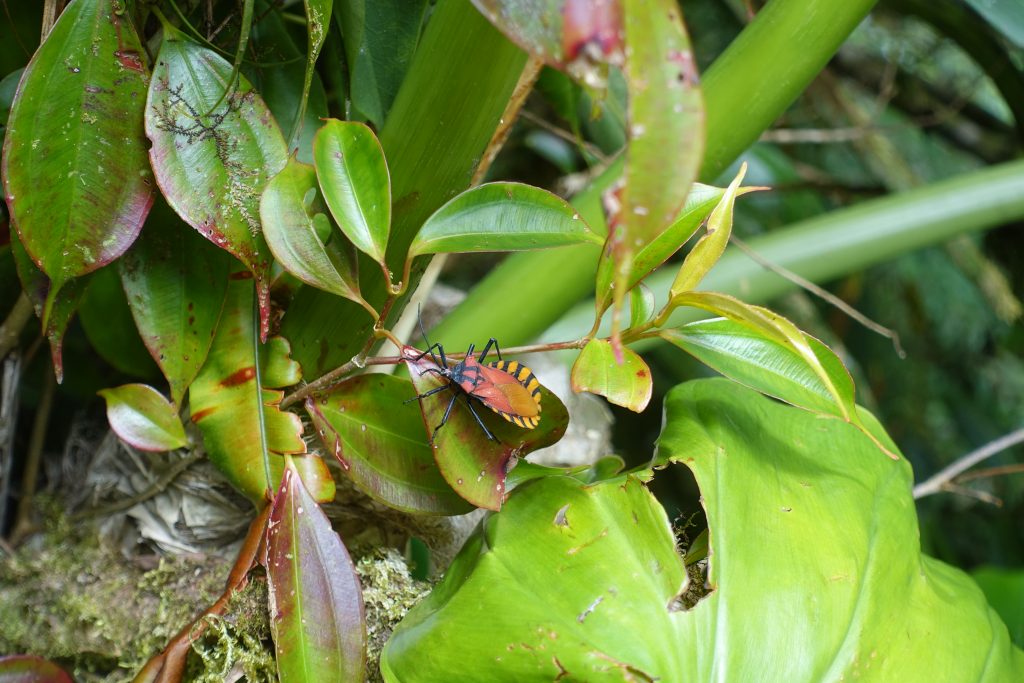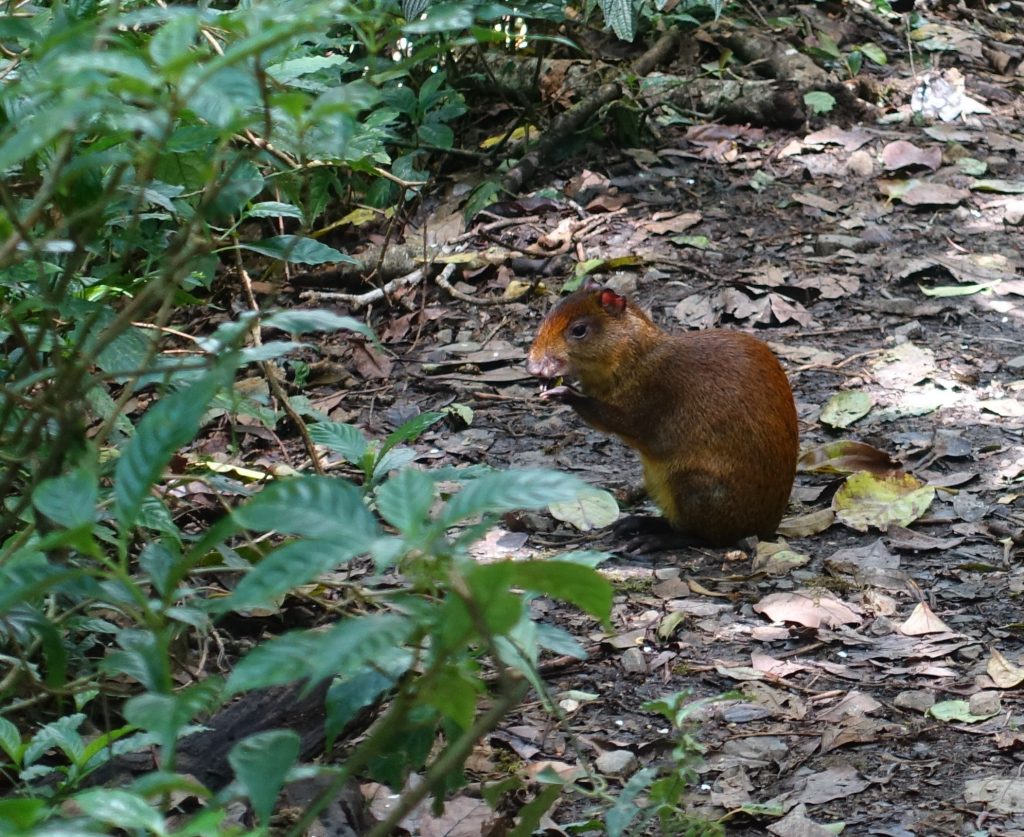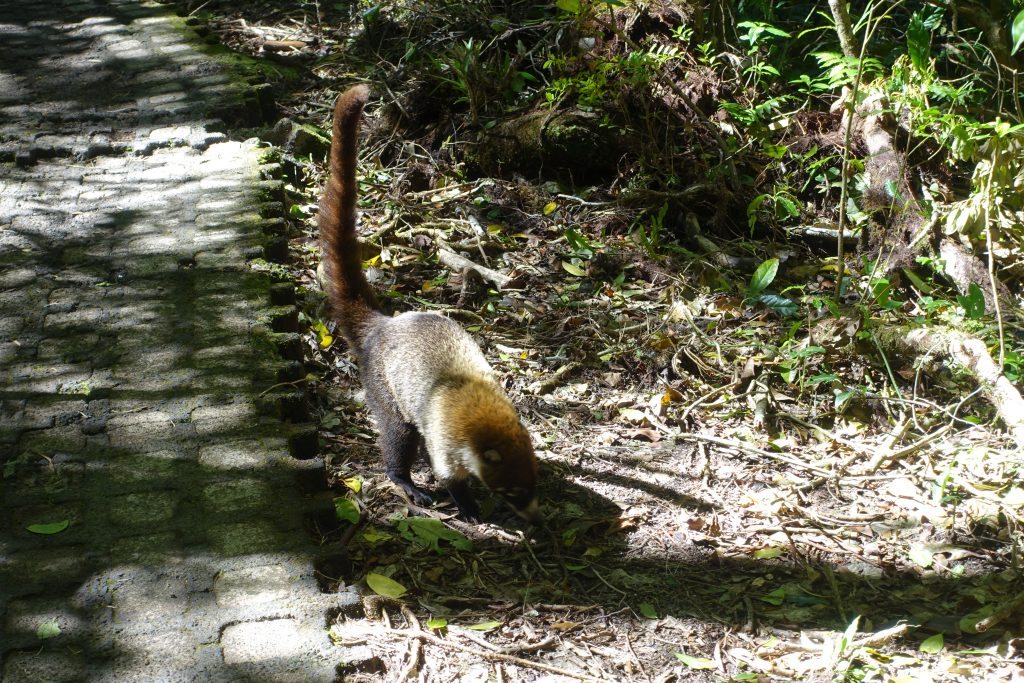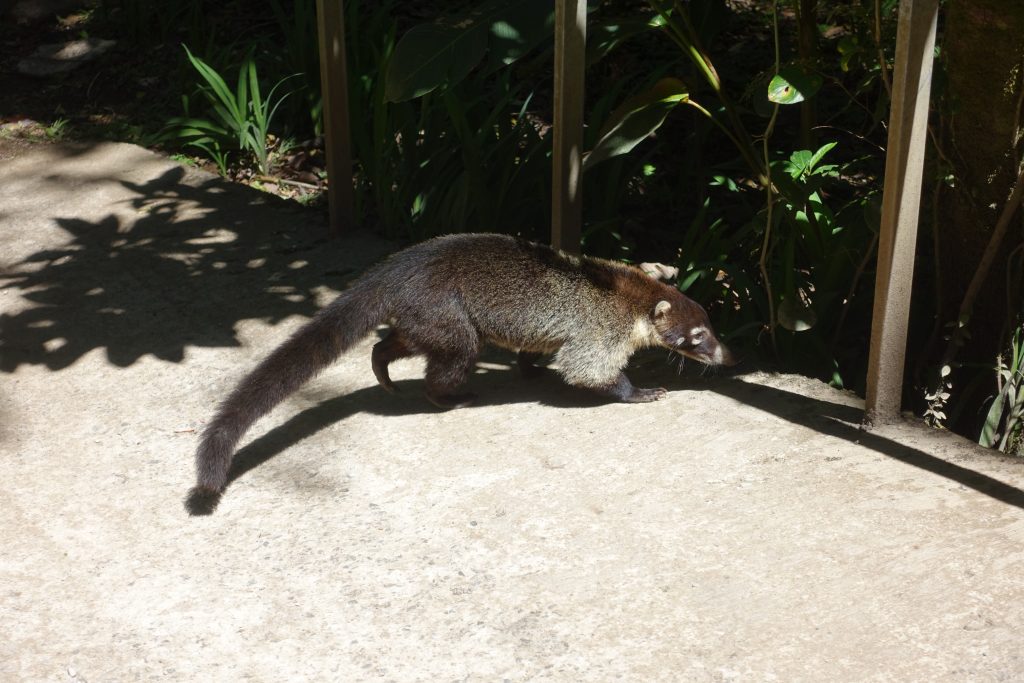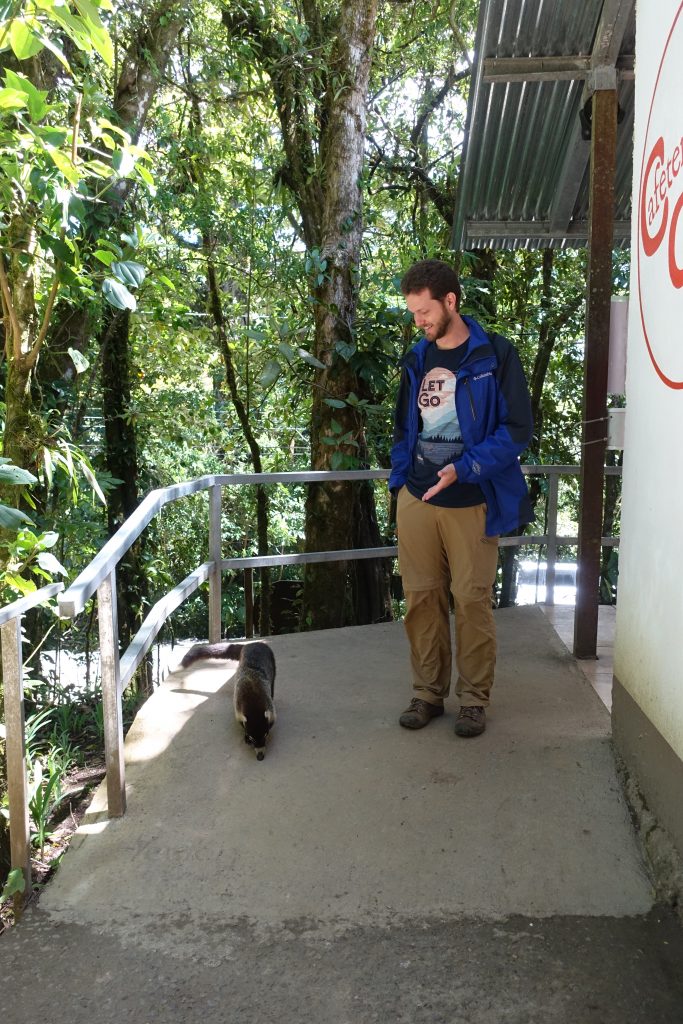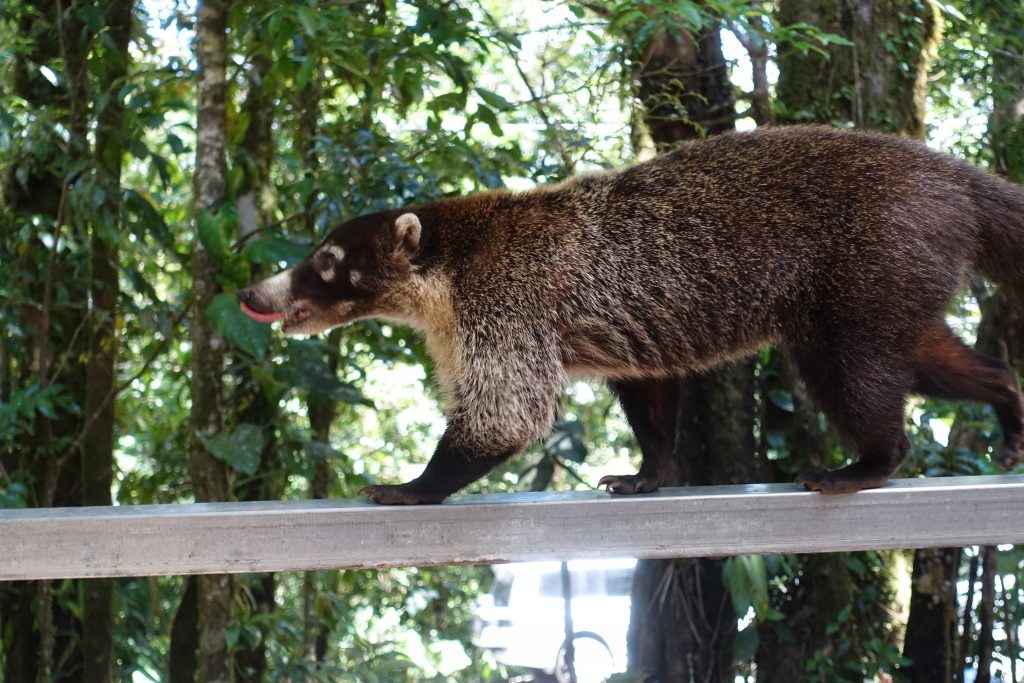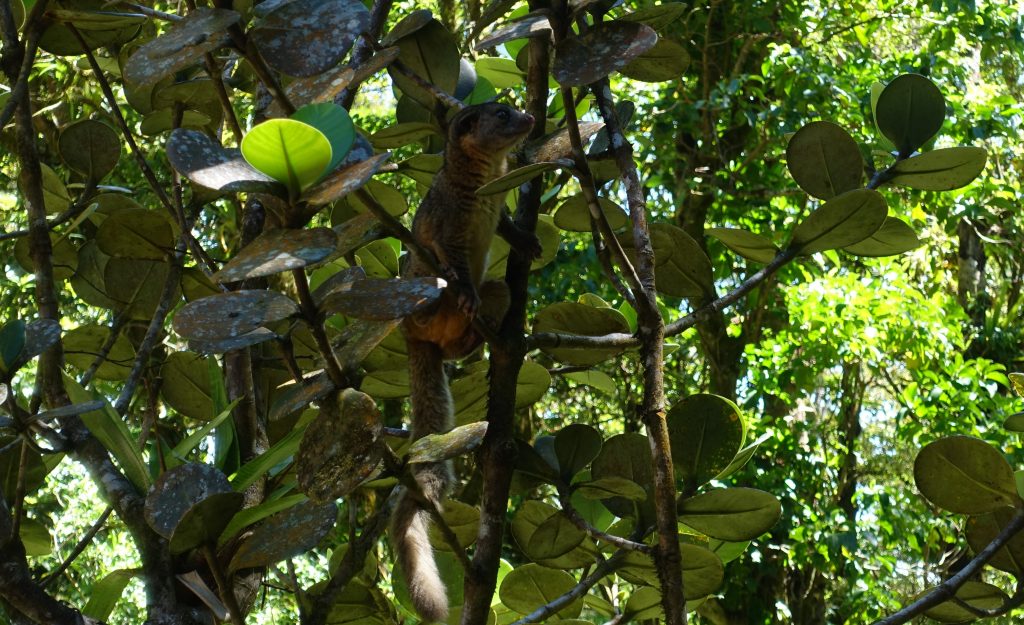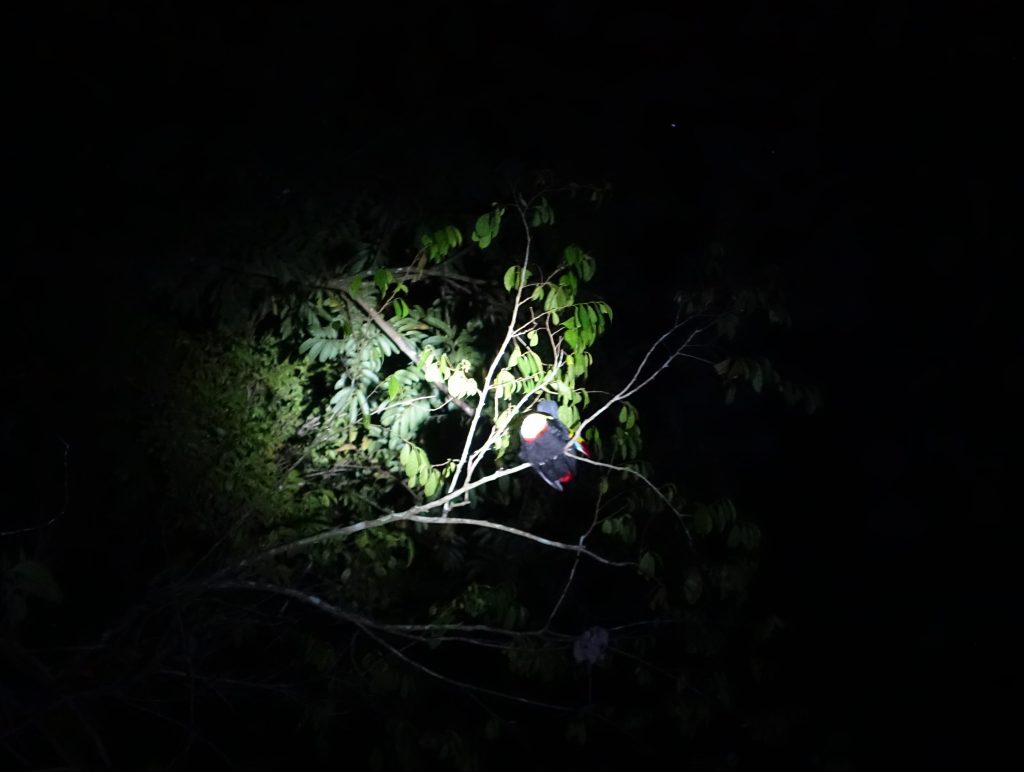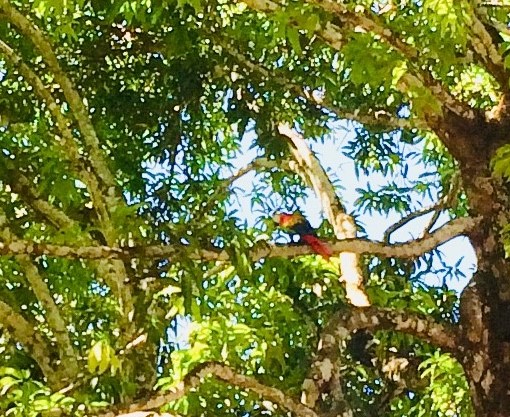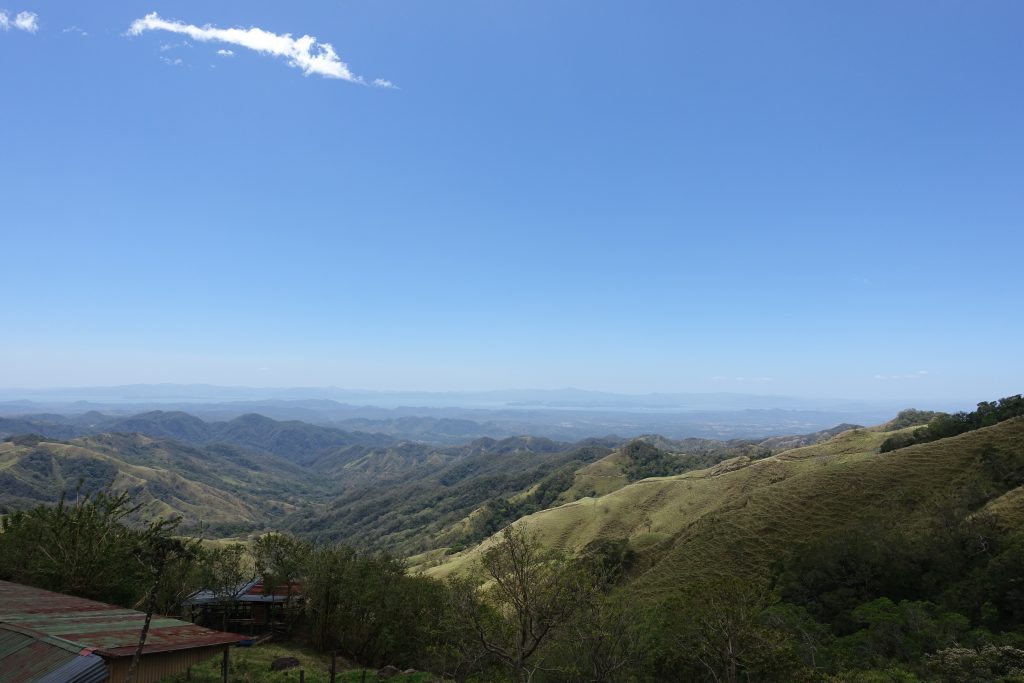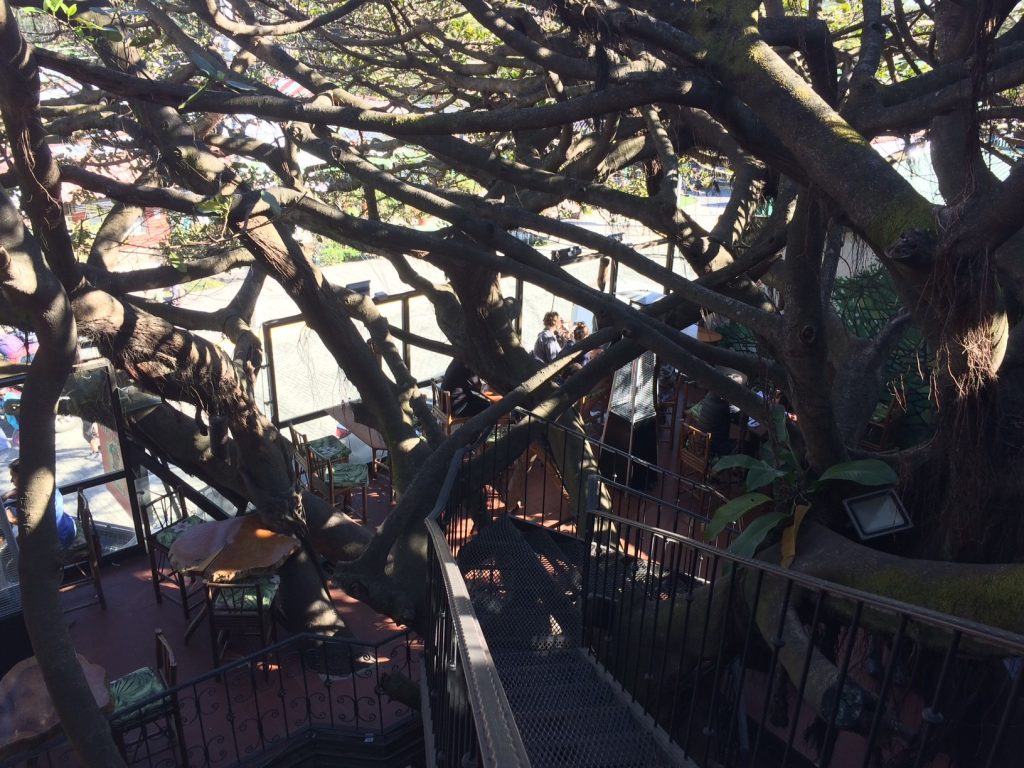Do you dream of retiring and moving somewhere warm and tropical, where people live a slower, more deliberate life? Well, come to Nuevo Arenal, and you can see what that looks like every time you walk by a bar or café. Now, you’ll find expats littered all over Costa Rica, but what make them stand out in Arenal (I’m going to save myself the trouble of writing Nuevo every time and just call it Arenal – like everyone else in the area) is that there’s not much else there. So what you have is a town that, if left to its own devices, would be a place for local farmers to buy groceries and supplies and for travelers to get a tank of gas and a bite to eat. But the weather is pleasant and the views of the lake and volcano (both also named Arenal) are decent, but not good enough to attract significant tourism – so a bunch of old gringos moved in and brought with them enough restaurants and shops to keep them happy.

Taken by Elani
So, why did me and Elani end up there for 12 days? Because there’s kiteboarding in the area. Bet you didn’t see that coming. Also, it looked a like a nice place to chill and relax with enough restaurants and good enough Internet to keep us happy and Elani working. It was a good place to settle in for a few days and change gears from being in tourist mode in Monteverde to living at a more sustainable pace while traveling.
Getting there was pretty straight forward. We took a public bus to Tilaran (what, you’ve never heard of Tilaran?), the closest city to Arenal, and our AirBnB host offered to pick us up there, partly as an excuse to runs some errands. He was, as you probably could have guessed, a mostly retired ex-pat who owned an apartment building that was built by another old ex-pat, and rented mainly to other old ex-pats. It was a nice little apartment, nothing fancy, but with everything we needed to be comfortable for a couple of weeks.
The town itself was cute, with two main roads formed an “L” and had most of the shops bars and restaurants. At the end of one of the roads was a nice looking little church that overlooked the soccer fields – you know, exactly want you might expect from a pleasant Costa Rican town.
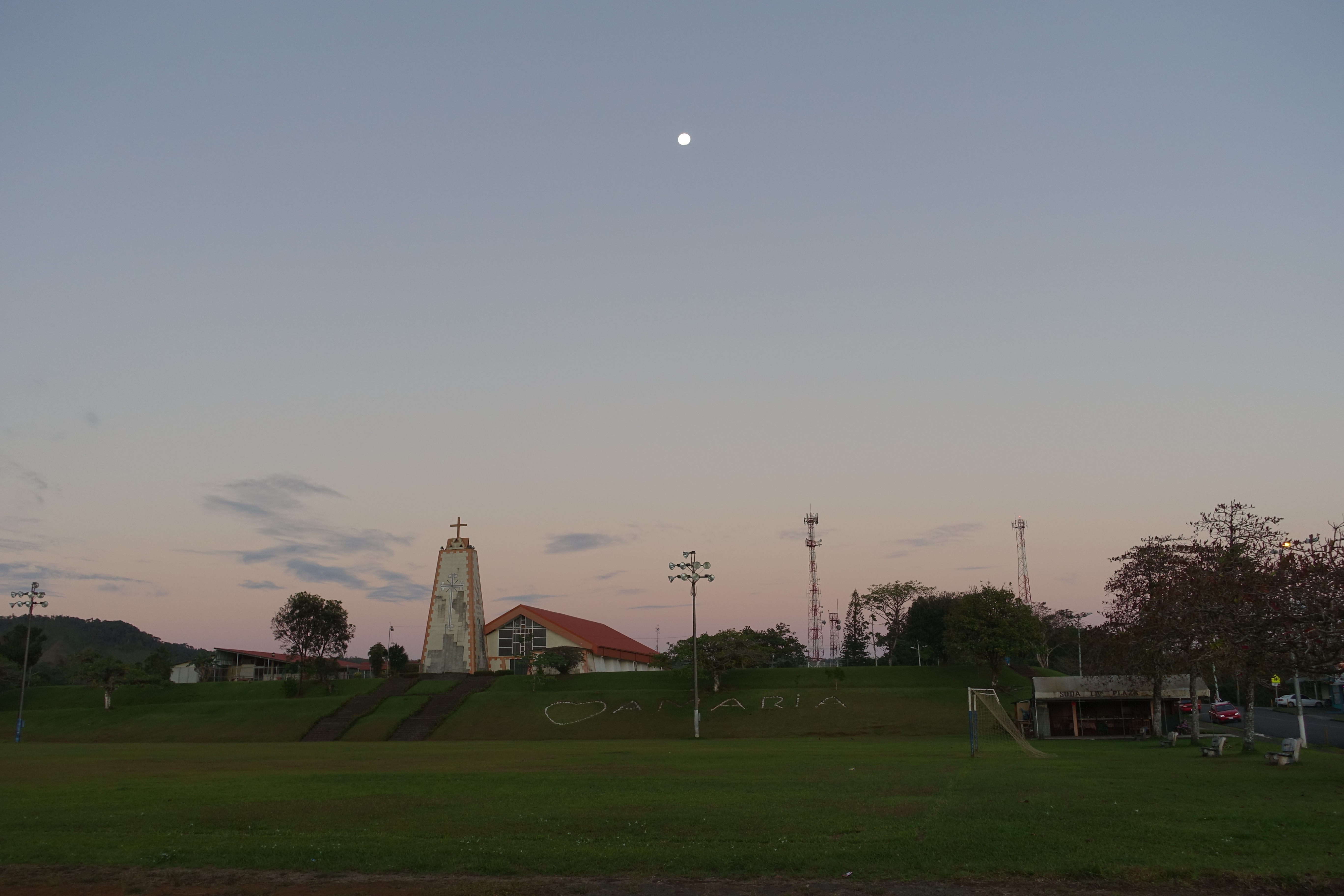
Taken by Elani
It was pretty common to see views of Arenal Volcano from spots in the town – it didn’t have the commanding presence that it did in our next stop, La Fortuna but it was quite picturesque.
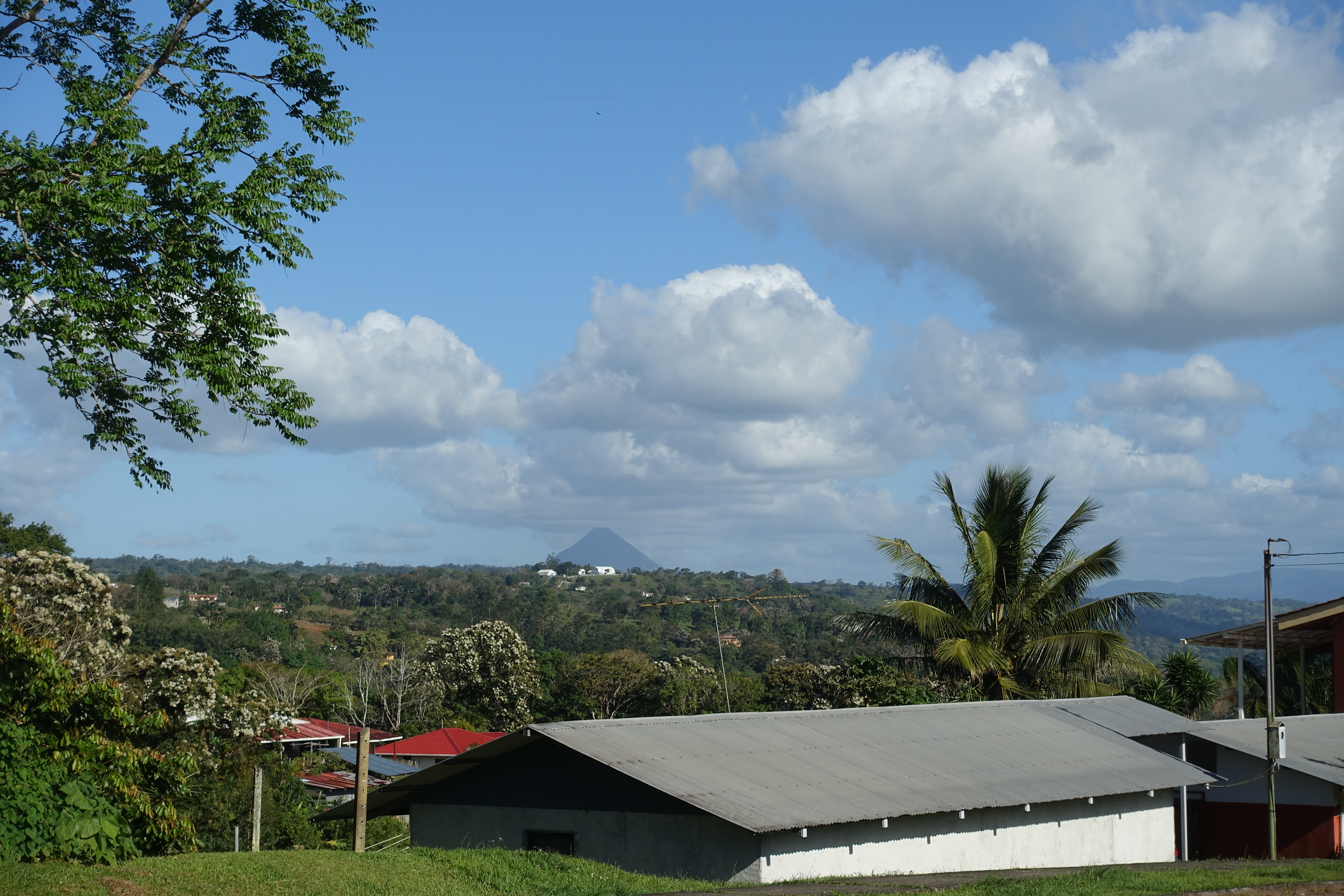
Taken by Elani
In town, there honestly wasn’t a lot to do other then taking a walk, eating, and drinking. But those were pretty worthwhile activities, since the scenery was pleasant and sightings of keel billed toucans (for the uninitiated, those are the ones that look like Toucan Sam), vultures, and other birds were fairly common, and Arenal definitely punches above its weight with respect to the food scene. There were several good options for pizza (which is pretty much the second option you’ll find in Costa Rican after Costa Rican food), local, and American-ish. We had some admirable burgers and pasta at a place right next to the lake.
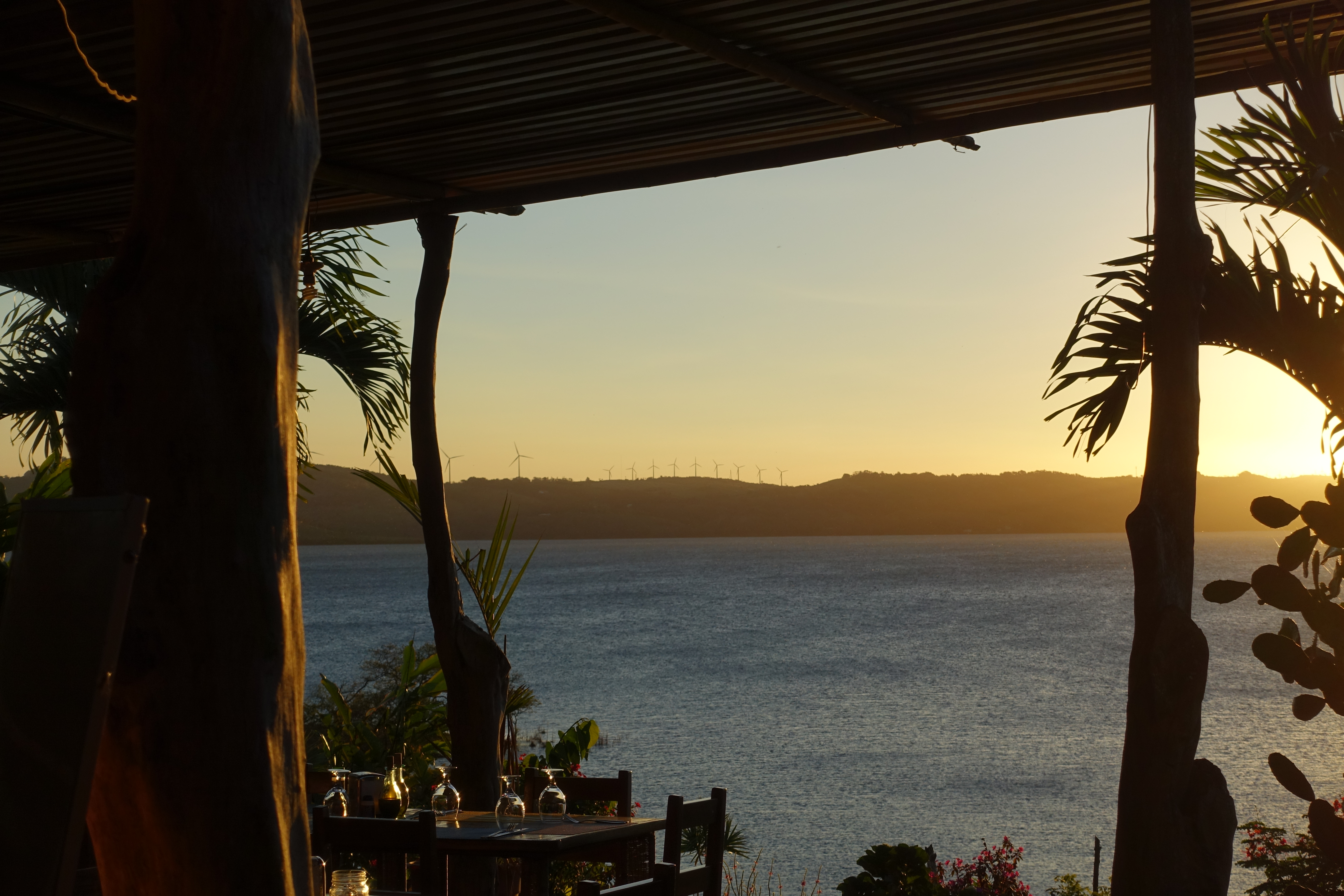
Taken by Elani
But the real standout restaurant was the “Gingerbread.” The chief was an American-trained Israeli chief with a gregarious attitude and a rather foul mouth. We ordered a 5 course chief’s menu and were by no means disappointed or underfed. The first two courses were a roast duck quesadilla and a wild mushroom cream with fresh bread. They were followed by a Greek salad, fish, and fillet minion. Which were then followed by a multi element desert with ice cream, cake, passion fruit seeds, and some things I’m sure I’m forgetting. Everything was great, but I think the first two courses were the winners.
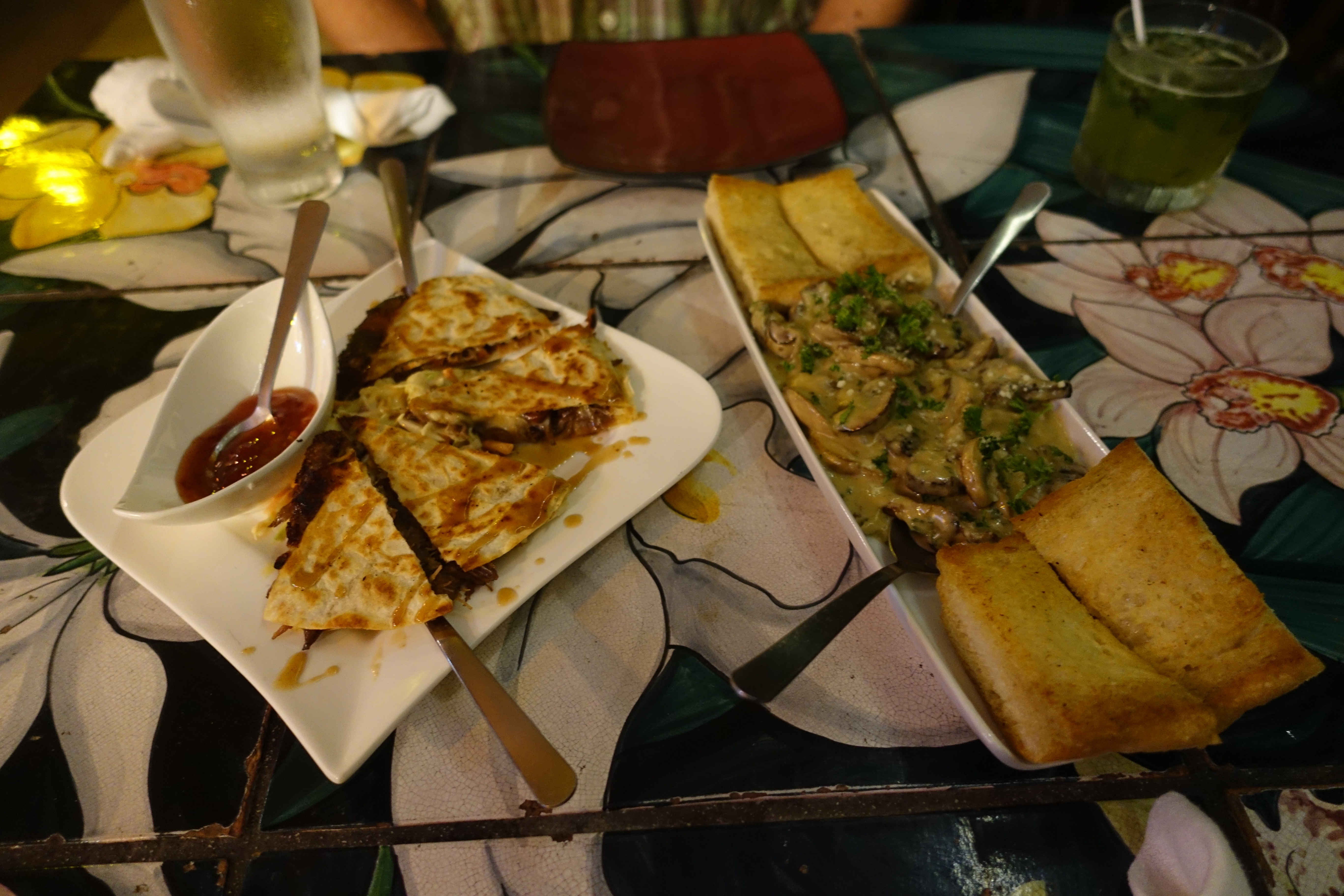
Taken by Elani
I’m writing this a bit after the fact, so now that it’s been a couple months, I’d say the most memorable part was – not surprisingly – the kiting. On Lake Arenal, there’s really just the one launch. It’s run by a nice Brit who’s been running it for the last 19 years that it’s been a vacation spot of sailboarders and, more recently, kiters. It was probably still a bit more of a sailboarder spot then a kiter spot, but there wasn’t any of the silly rivalry that sometimes pops up between the two groups. Everyone was very friendly, so there was always someone to shoot the shit with on breaks between sessions or when waiting for the wind to pick up. Since I didn’t have a rental car, the trip out there was a bit of a slog on the public buses with all my gear. On top of that, there wasn’t really a stop where I needed to get off (which is fairly typical for Costa Rican buses) so on the return trip, I had to wait until the bus went by (which could vary quite a bit) and flag the driver down. Oh well – after a couple times, it was pretty much routine.
The conditions on Arenal aren’t perfect, and I can see why it hasn’t become one of the kiting meccas of the world. The launch was tricky, the wind is fairly gusty and variable, and the water is fairly choppy, but not choppy enough for wave riding. On the other hand, the wind was certainly a fair sight tamer than at Playa Copal (a welcome change, I must say) and there was pretty much always enough of it. Also, the temperatures were warm enough to never even consider a wetsuit, the scenery had excellent views of Mount Arenal in the background, and as I mentioned, there was a nice contingent of friendly sail- and kiteboarders around. One particularly friendly sailboarder – Ted – was taking pictures between outings and was nice enough to send some of me along and let me use them here. This one does a great job of making me look awesome and showing off the views of the mountain:
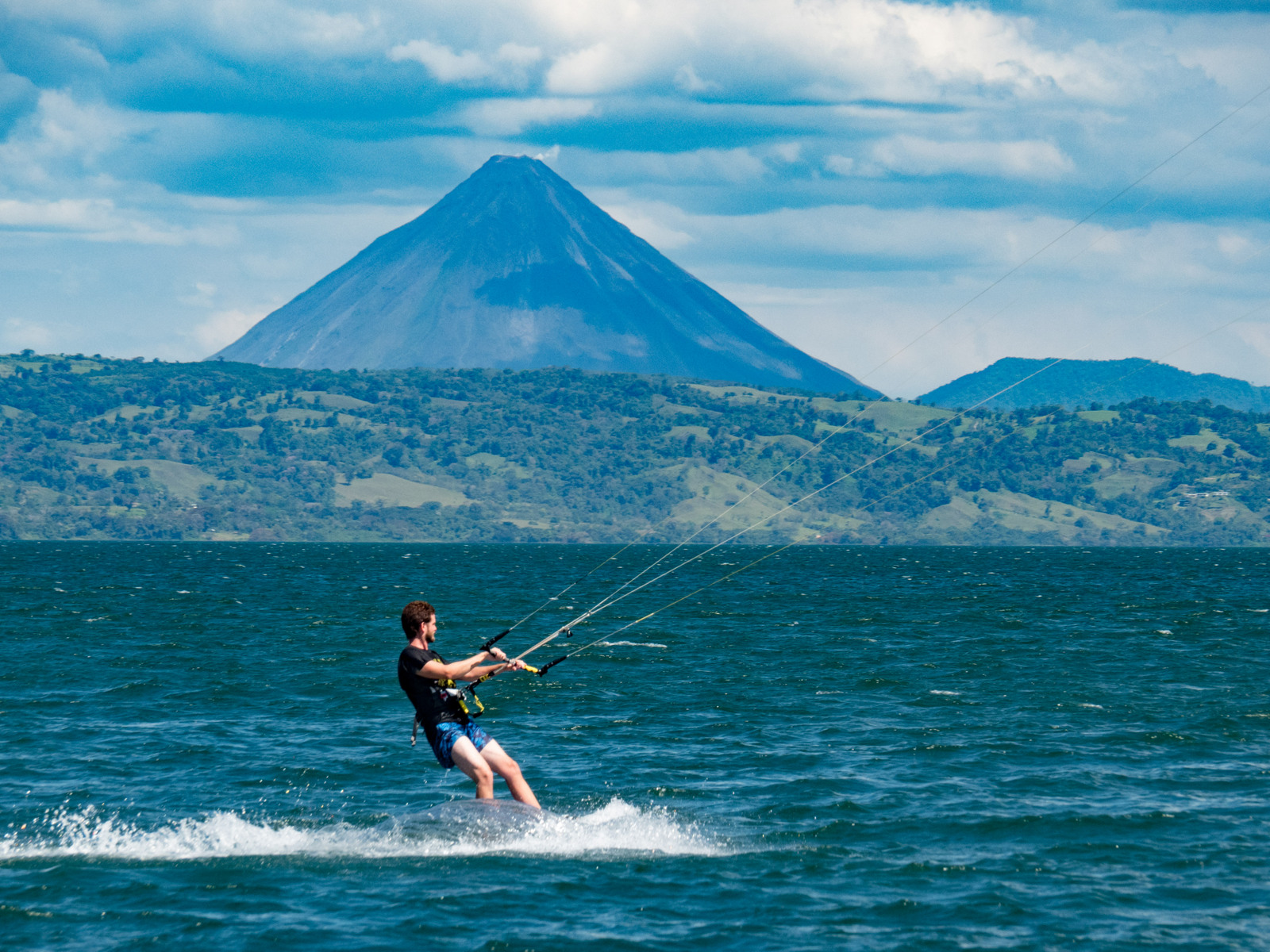
Taken by Ted the sailboarder
